UPEF Award Winners
UPEF has awarded travel grants to several conferences since 2012, including the 2012 International Conference on Permafrost (ICOP) in Russia, the 2018 Regional European Conference on Permafrost (EUCOP), and to the annual American Geophysical Union (AGU) conferences.
The following award winners represents our future and growing community of permafrost young research professionals. Please review and see how many you may know. Many of our award winners are becoming active members of the USPA and leaders in our permafrost community. Please consider supporting our continuing efforts to recognize and support students that will help advance permafrost related education and research.
2024 USPA/PYRN Education Fund (UPEF)
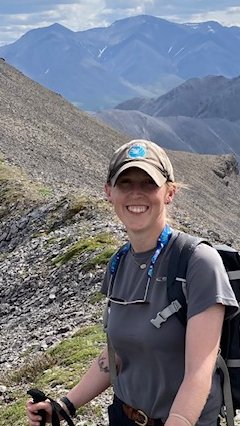
Erin VanderJeugdt, Kent State University
My name is Erin VanderJeugdt, I am a PhD candidate at Kent State University. My overall research focuses on how shifts in hydrologic regimes in arctic soils will impact redox conditions, iron transformations, and nutrient availability. Using this funding from USPA, I will attend AGU this December and present one of my dissertation chapters, along with networking with other permafrost scientists and attending DEI discussions. My presented research looks at how storm intensity and duration can change redox along the soil profile in well-drained and semi-saturated arctic soils using an ex-situ intact soil core incubation set-up. Thank you to the USPA for this funding and I look forward to seeing everyone at AGU24!
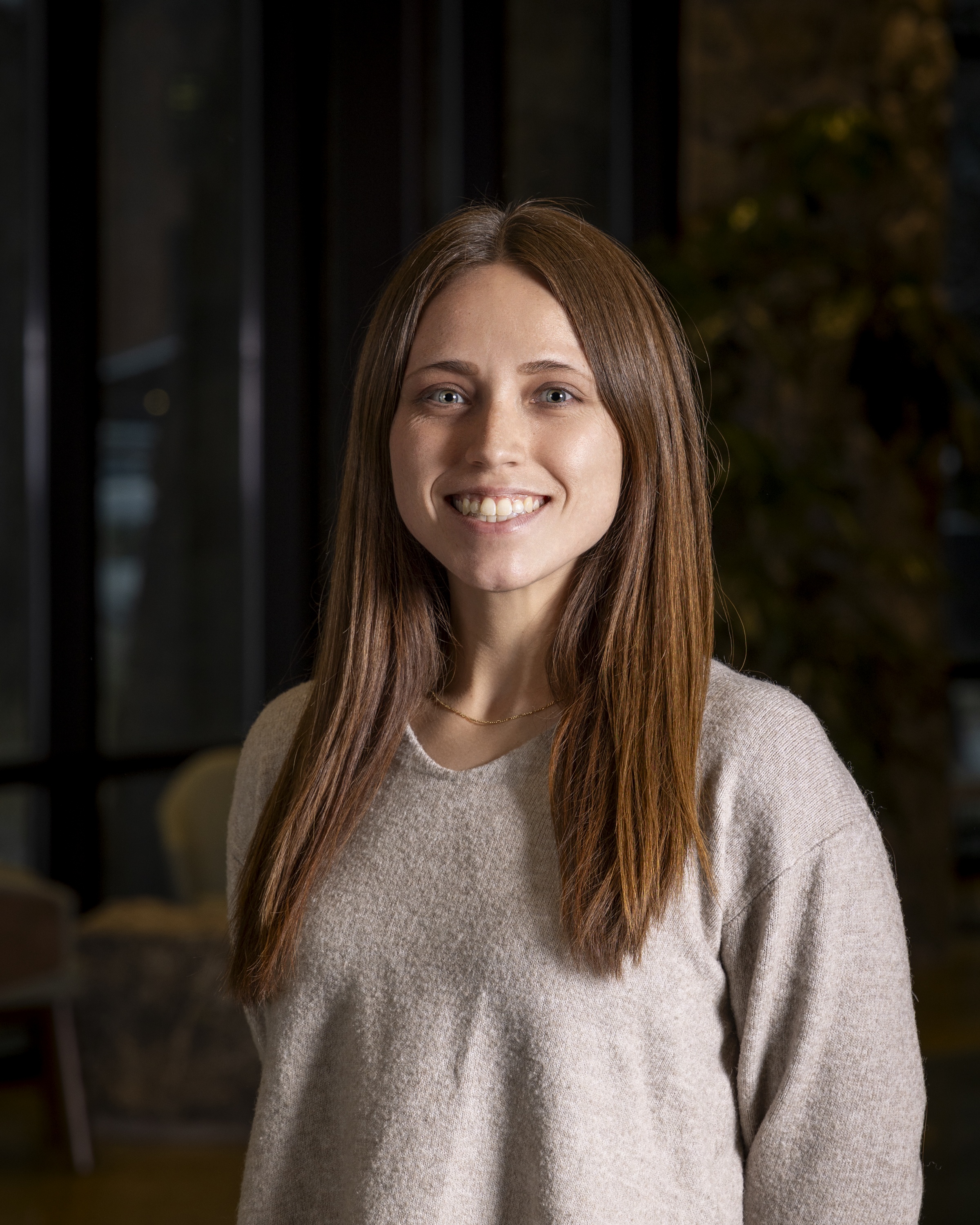 Zena Robert, Montana State University Zena Robert, Montana State University
My name is Zena Robert, and I am a PhD student in the Earth Science Department at Montana State University. My research focuses on the feedbacks between geomorphic processes and permafrost dynamics on soil-mantled hillslopes in Interior Alaska. This year, I will present a portion of my study investigating how permafrost thaw in upland environments alters hydrologic, geomorphic, and biogeochemical signals within thermo-erosion gully stream systems. In addition to being able to present my research, attending AGU provides valuable opportunities to connect with the permafrost community and learn more about new and innovative research being done by others in the field. I am very grateful to have received the UPEF award to attend AGU this year and will always be thankful for the support that USPA/PRYN provides to students in the permafrost community!
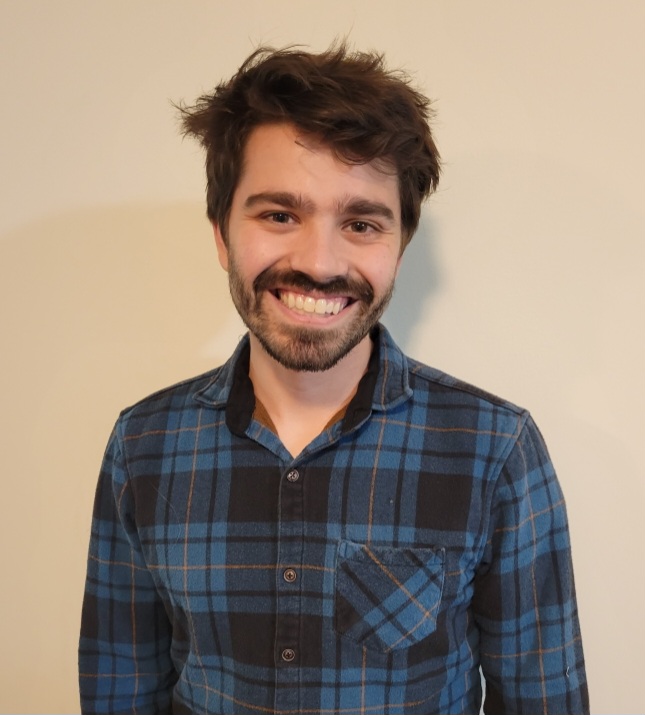 Sam Bratsman, University of New Hampshire Sam Bratsman, University of New Hampshire
My name is Sam Bratsman, and I am a PhD student at the University of New Hampshire. I am studying how permafrost thaw impacts soil microbial communities in the Arctic. I am interested in the drivers of community assembly, and the implications this can have on nutrient cycling and permafrost carbon feedback. I aim to understand the broad impacts of this on global nutrient cycles and on the local and indigenous communities of the Arctic. This travel award will allow me to share my research and learn from others at the 2025 Toolik Field Station All Scientists Meeting in Santa Barbara, CA.
2024 ICOP Travel Awards
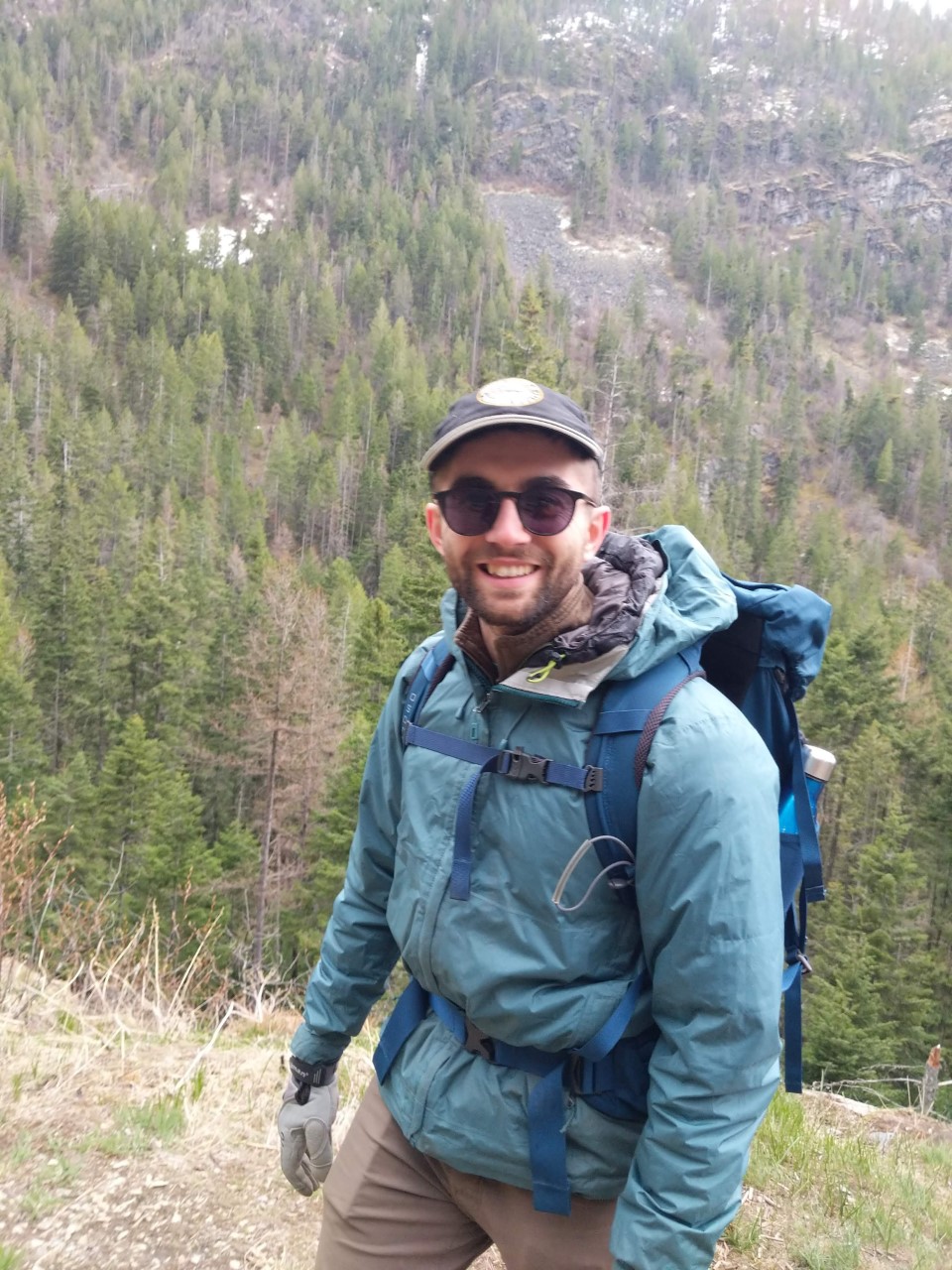 Ben Maglio, University of Alaska Fairbanks Ben Maglio, University of Alaska Fairbanks
My name is Ben Maglio, I am a postdoctoral researcher at the University of Alaska Fairbanks, working on a terrestrial ecosystem model. I am interested in modeling permafrost wetland systems with a focus on integrating a methane flux module into our model, as well as improving representation of physics-based thermal and hydrological processes in northern peatlands. I received my PhD in semiconductor physics from Cardiff University, and took a leap after graduation to move into high latitude ecology and permafrost science. The USPA has been very welcoming to me and I am looking forward to attending ICOP this year to present my work in this new and exciting field.
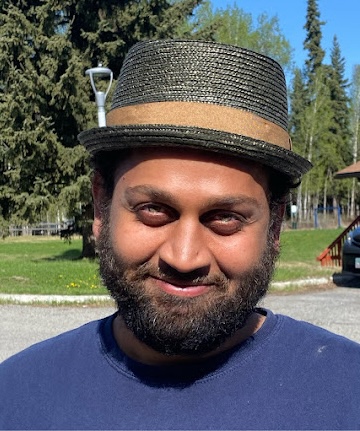 Soumitra Sakhalkar, University of Alaska Fairbanks Soumitra Sakhalkar, University of Alaska Fairbanks
I am Soumitra Sakhalkar, a Graduate Research Assistant at the University of Alaska Fairbanks. My research is about incorporating both accurate field measurements and InSAR for monitoring as well as assessing the impacts of thawing permafrost in Alaska. With the help of USPA I was able to attend and present my research at the ICOP 2024, held in Whitehorse, Yukon, Canada. This will be my first ever ICOP and I am greatly looking forward to presenting my poster at the conference and networking with my colleagues and peers in my field of research. Attending and presenting at conferences such as ICOP is a great way to meet other researchers and familiarize myself with the latest research that is being conducted in the field, all around the world. I am grateful to the USPA for supporting my participation in this important experience.
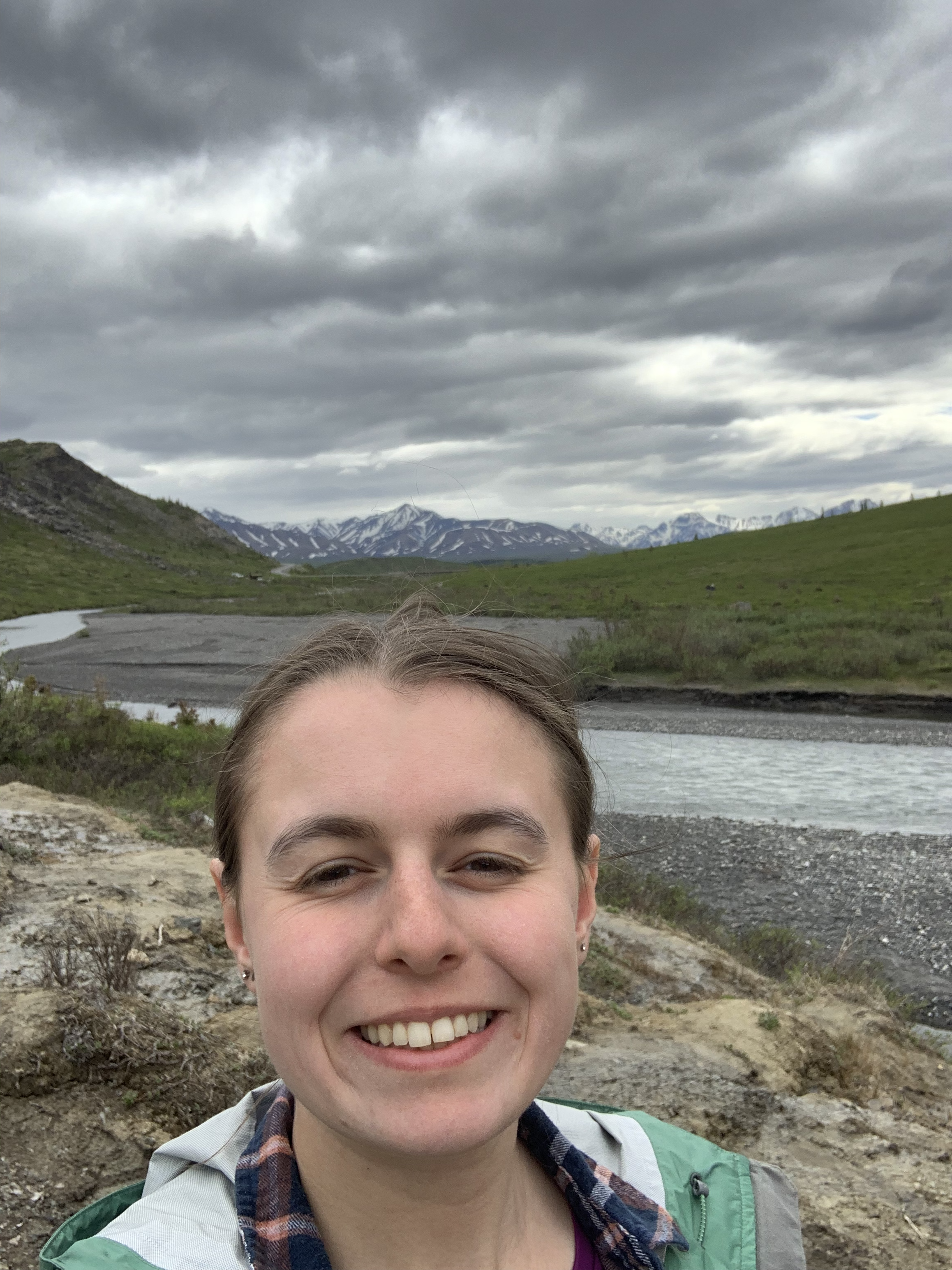
Megan McGroarty, Northern Arizona University
I am a PhD student in the Biology Department at Northern Arizona University. First of all, thank you to the USPA for funding my travel to ICOP this summer! I will be presenting work on time series data from two sites in Healy, Alaska, of annual decomposition of a common substrate within a thawing tundra. Understanding how permafrost thaw affects decomposition is essential for comprehending the impacts on soils and plants in this highly sensitive environment, as well as the potential changes to the carbon cycle as the Arctic continues to warm. To do this, we examined annual decomposition using a common substrate, cellulose paper, at both long-term sites thaw Gradient (comprises three varying sites of natural permafrost thaw: minimal, moderate, and extensive thaw) and the Carbon in Permafrost Experimental Warming Project (CiPEHR) within the Arctic Carbon and Climate (ACCLIMATE) observatory. I'm excited to see everyone in June and hear about all the fascinating new research on permafrost!
2023 USPA/PYRN Education Fund (UPEF)
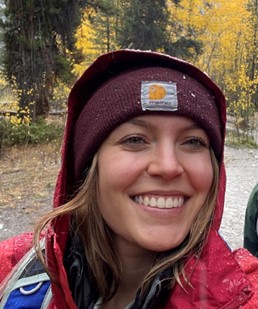
Hailey Webb, University of Colorado Boulder
My name is Hailey Webb and I am a PhD student in Ecology & Evolutionary Biology at CU Boulder. I am extremely grateful for the UPEF award which will allow me to present my work on a permafrost thaw database of Alaska at AGU in December. This database has been in the works for about a year and I am really excited to share the progress that's been made. My hope is that this database will help us better understand the spatial distribution of thawing permafrost across the landscape and determine which environmental factors are important in predicting permafrost thaw. My research interests involve permafrost carbon cycling from small-scale microbial processes all the way up to regional-scale emissions. I am looking forward to seeing everyone in December and hearing about all the exciting new research that's been happening in the last year!
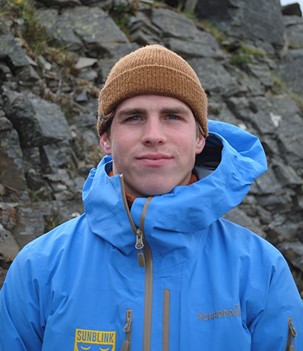
Vasily Tolmanov, Michigan State University
Vasily A Tolmanov is a third year PhD student who specializes in Physical Geography at Michigan State University (MSU). Inspired by the three-year fieldwork in Alaska and north of Siberia under the auspices of the Circumpolar Active Layer Monitoring Program, he continued the complex geographic studies at MSU. He conducts his research at MSU under the supervision of Dr. Nelson, a key specialist in permafrost and periglacial studies. His Ph.D research mainly focuses on the patterns and spatial variability of the active layer thicknesses (ALT) in different geographic and climatic conditions, quantitative assessment of the factors influencing its formation and the response of the ALT to the climatic changes.
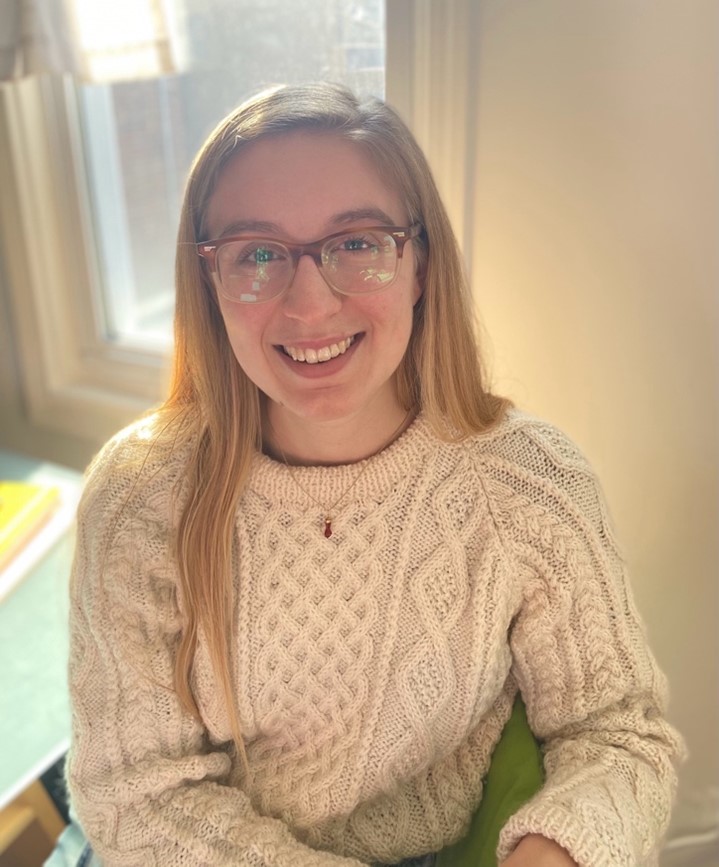
Katie Braun, University of Wisconsin-Madison
I am a PhD student in Earth Systems Geography at the University of Wisconsin-Madison. First, thank you to the USPA for funding my travel to AGU this year! I will be presenting work from my MS thesis, which I defended this summer. I used a combination of drone multispectral imagery, field sampling, and satellite remote sensing to map different stages of ice-wedge degradation and examine where ice-wedge landscapes are most vulnerable to thaw. Understanding how permafrost degradation varies across different spatial scales (from meter-scale variations to landscape-level trends) will allow us to better track degradation and estimate permafrost-carbon feedbacks associated with that degradation.
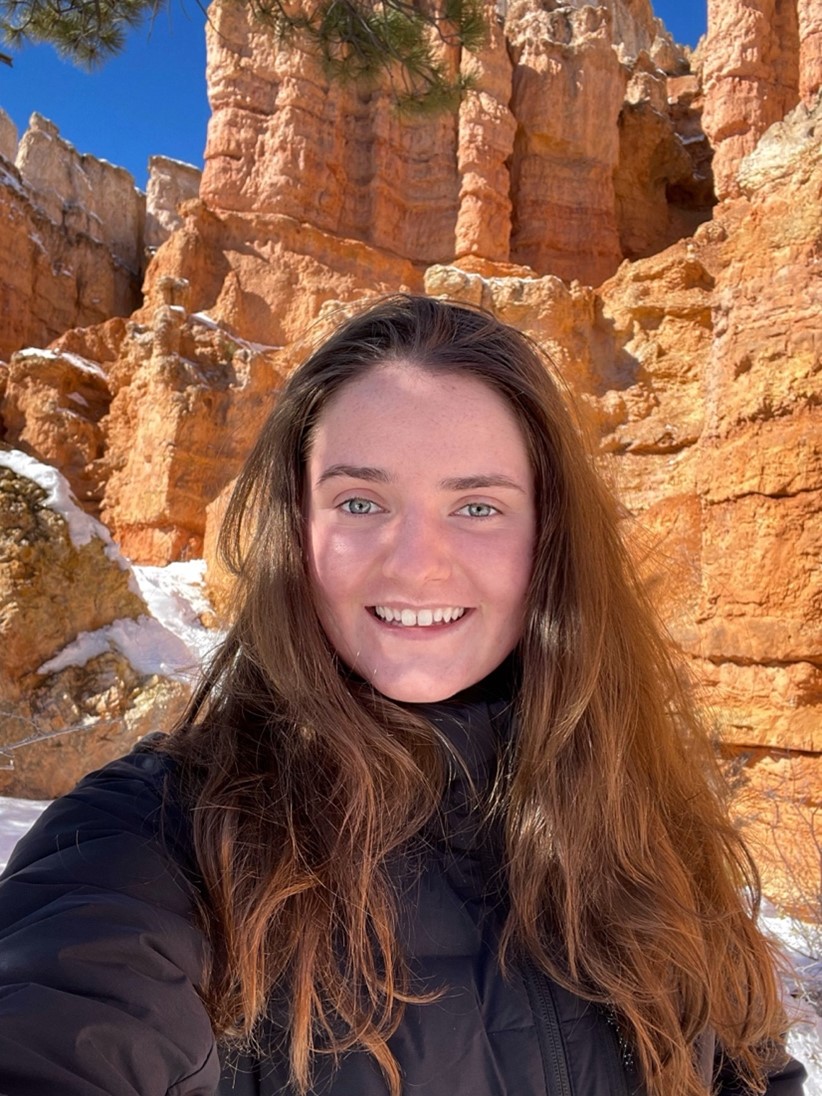
Leah Clayton, Yale University
My name is Leah Clayton, and I am a senior undergraduate in Earth and Planetary Sciences at Yale University. Throughout the last few years, I have been studying permafrost systems to understand the physical mechanisms relating active layer thickness and soil water content, and more recently, to understand the effects of wildfire in tundra biomes. I’m looking forward to presenting my latest research on using remote sensing to study surface, subsurface, and carbon cycling disturbance and recovery post-wildfire in the Yukon-Kuskokwim Delta, Alaska at AGU23. Thank you to the USPA for the support, and I’m very grateful for the opportunity to learn from and connect with other folks in the field!
2022 USPA/PYRN Education Fund (UPEF)
|
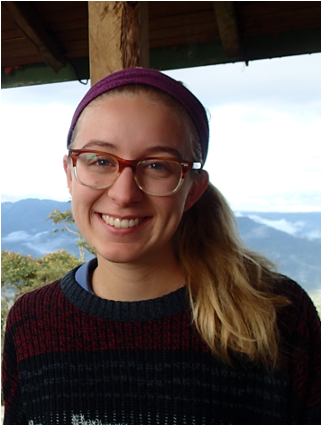 Katie Braun, University of Wisconsin-Madison Katie Braun, University of Wisconsin-Madison
I am an MS/PhD student in Earth Systems Geography at the University of Wisconsin-Madison. First, thank you to the USPA for funding my travel to AGU this year! I will be presenting work from my MS thesis on measuring ice wedge permafrost degradation on the Arctic Coastal Plain of Alaska using a mixture of satellite and drone remote sensing. I collected high-resolution multispectral imagery and drone LiDAR this summer, which I am using to identify the spectral and spatial characteristics of different stages of ice wedge degradation. Understanding how permafrost degradation varies across fine spatial scales will allow us to better track degradation and estimate permafrost-carbon feedbacks associated with that degradation. This will be the first time I attend AGU with a focus on Arctic Sciences, and I look forward to connecting with other researchers and the USPA community in Chicago.
|
|
Kristina Levine, Texas A&M University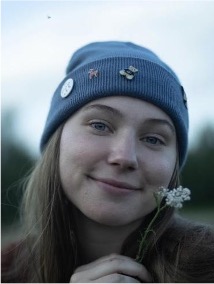
My name is Kristina Levine, and I am an undergraduate student about to graduate with my BS in geology from Texas A&M University. I am very grateful to have received the UPEF Travel grant to go to AGU. I did not grow up in a cold region, and my research on permafrost literature is done remotely, so it’s very exciting that I will now be able to go to the meeting in-person to present and talk with other people who are doing permafrost research. Thank you UPEF committee for giving me this opportunity!
|
|
Nicole Guinn, University of Houston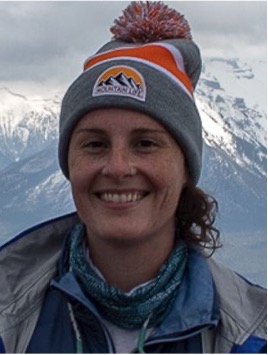
At AGU 2022, I presented on my work done during my Scientist in the Parks (SIP) position at Denali National Park (DENA) and from my geosensing PhD program. The primary focus of this research was to characterize the movement of permafrost driven mass wasting events over the DENA road corridor by assessing them through differential interferometric synthetic aperture radar (DInSAR) techniques. The acceleration of the Pretty Rocks rock glacier has necessitated closing half of the park road for the entire 2022 season for the first time in the park’s history. Several other active rock glaciers are adjacent to the park road, but they have minimal to no monitoring. Remote sensing can potentially be utilized effectively to support decisions related to future road closures and improve the safety of the visitors and staff. Conversations at AGU about this relatively sudden reaction of Arctic landscapes to a warming climate will be instrumental as I build up my geology career path, and I am incredibly thankful for the support from USPA UPEF.
|
|
Brad Gay, George Mason University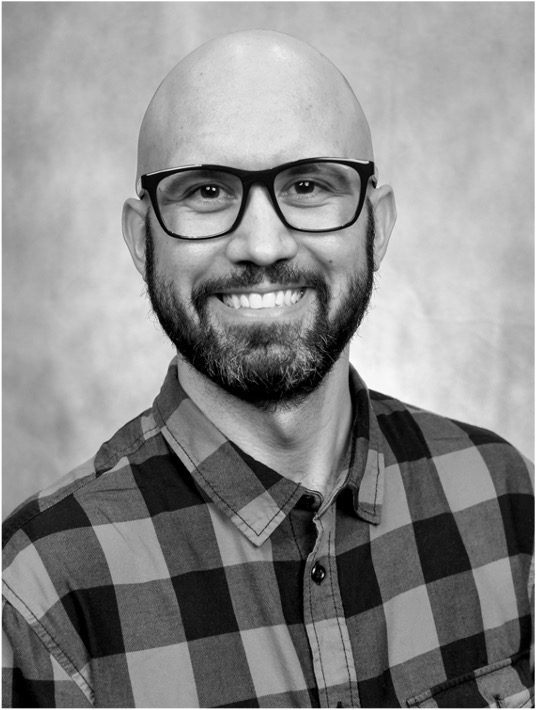
My name is Bradley Gay, and I am a PhD Candidate in the Earth Systems and Geoinformation Sciences program at George Mason University. My research investigates permafrost carbon dynamics with artificial intelligence, earth observation data, and information theory. With in situ and flux tower measurements galvanizing teacher forcing strategies, the AI model seeks to bridge remote sensing and modeling outputs to identify and forecast drivers of permafrost degradation and carbon efflux in a more robust, efficient manner. I am excited to present this ongoing research at AGU21 alongside many others within the Biogeosciences Section (Vulnerability of Permafrost Carbon to Climate Change), and discuss ongoing efforts to explore the flexibility and application of this model with future space missions to monitor the extent and duration of the zero-curtain relative to the persistence of soil respiration during the cold season.
|
|
Vasily Tolmanov, Michigan State University
My name is Vasily Tolmanov and I am a PhD Student at Michigan State University, Department of Geography, Environment and Spatial Science. This December, I have a great opportunity to attend the AGU Fall Meeting. The Fall Meeting is always a very inspirational event for me. I generated lots of new ideas that laid in the base of my master’s thesis and publications, while walking through the hundreds of posters in the past meetings, so I want to believe that this meeting would not be exceptional. I am working on the first part of my doctoral dissertation right now and hope that this upcoming event will help to shape my ideas. I can’t wait to receive valuable feedback from Arctic researchers on my first dissertation part that I am very excited to present. This feedback will help me to correct the flaws of my work and turn it into a high-quality article in the future. I am very grateful to the USPA for supporting my participation in this important event and very proud to continue the strong Spartan presence in the permafrost community.
|
|
Anna Lekso, Baylor University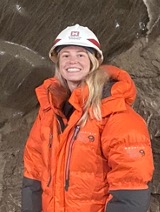
My name is Anna Lesko, and I am a PhD candidate at Baylor University. For my dissertation, I am reconstructing Late Cretaceous paleoclimate using fossilized soils. This past summer, I received an opportunity to intern with the Cold Regions Research and Engineering Lab (CRREL) in Fairbanks, Alaska. While there, I investigated Fe cycling in arctic soils as well as per- and polyfluoroalkyl substances (PFAS) remediation using Fe and activated carbon amendments. I am looking forward to sharing the type of research that I conducted at the American Geophysical Union annual conference, an experience that wouldn’t have been made possible without the USPA AGU travel grant.
|
|
Sean Schaefer, University of New Hampshire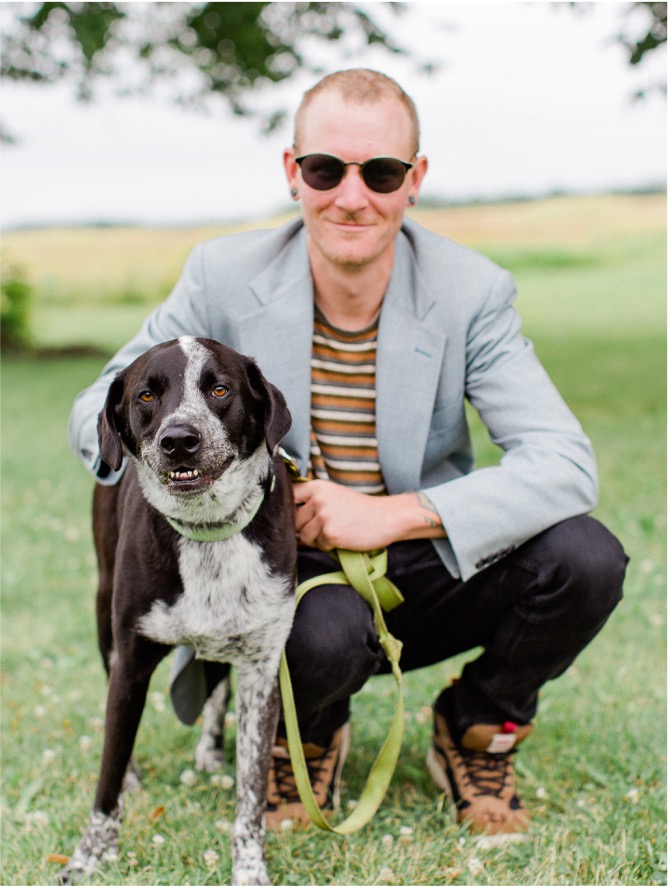
My name is Sean Schaefer and I am a PhD. candidate at the University of New Hampshire. My research topics include microbial ecology and biogeochemistry of permafrost affected regions. Specifically, I am interested in correlating how changes in microbial communities, brought on by climate change factors, may result in changes in global C cycles. I believe that this link between microbial communities and global C cycles are critical toward creating better climate models and more sustainable policies.
|
2020 AGU Awards
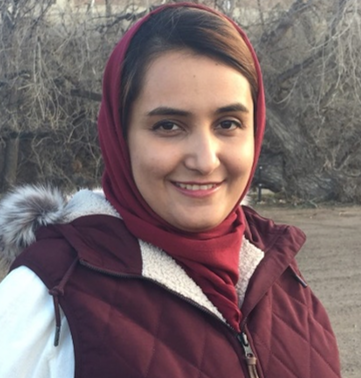 Sayadeh Sara Sayedi, Brigham Young University: I am Sayedeh Sara Sayedi, a PhD candidate at Brigham Young University. My research is about subsea permafrost carbon stocks and climate change sensitivity. With the help of the USPA, I had the opportunity to present at the AGU2020. Even though AGU2020 was completely virtual, it was a great experience. During our session, I presented my work and had the opportunity to learn about others research. More than 70 participants were in our session and we had a great discussion at the end with all presenters and participants. It is always great to meet other researchers and become familiar with the latest research that is conducted around the world. Sayadeh Sara Sayedi, Brigham Young University: I am Sayedeh Sara Sayedi, a PhD candidate at Brigham Young University. My research is about subsea permafrost carbon stocks and climate change sensitivity. With the help of the USPA, I had the opportunity to present at the AGU2020. Even though AGU2020 was completely virtual, it was a great experience. During our session, I presented my work and had the opportunity to learn about others research. More than 70 participants were in our session and we had a great discussion at the end with all presenters and participants. It is always great to meet other researchers and become familiar with the latest research that is conducted around the world.
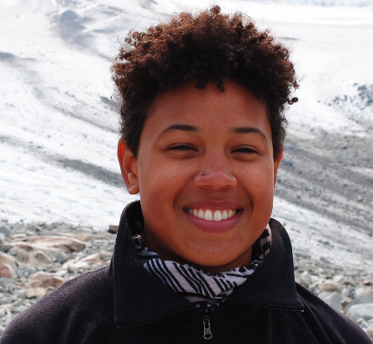 Raven Mitchell, Michigan State University: My name is Raven Mitchell and I am a PhD Student at Michigan State University. This fall I had the great opportunity to virtually attend the AGU annual meeting. I presented two posters where I received valuable input from Arctic researchers via the live chat forum. This feedback will help to improve my research going forward. In addition, I participated in the Student Flash Freeze Competition sponsored by the Cryosphere Specialty group where I was awarded a mini-grant to help fund my future research. I am grateful to the USPA for supporting my participation in this important experience. Raven Mitchell, Michigan State University: My name is Raven Mitchell and I am a PhD Student at Michigan State University. This fall I had the great opportunity to virtually attend the AGU annual meeting. I presented two posters where I received valuable input from Arctic researchers via the live chat forum. This feedback will help to improve my research going forward. In addition, I participated in the Student Flash Freeze Competition sponsored by the Cryosphere Specialty group where I was awarded a mini-grant to help fund my future research. I am grateful to the USPA for supporting my participation in this important experience.
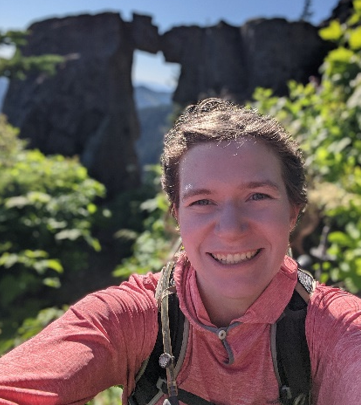 Allison Trcka, Portland State University: My name is Allison Trcka and I am a masters student at Portland State University. I am researching the topography and climate of rock glaciers. My experience at the AGU meetings was unique. Due to work I was not able to attend most of the meeting. Typically, I would have missed sessions that I was interested in, but due to the meeting being virtual I was able to go back and attend all the sessions that I missed. It was nice to go back and re-watch and read the oral presentations and posters as many times that I want. Allison Trcka, Portland State University: My name is Allison Trcka and I am a masters student at Portland State University. I am researching the topography and climate of rock glaciers. My experience at the AGU meetings was unique. Due to work I was not able to attend most of the meeting. Typically, I would have missed sessions that I was interested in, but due to the meeting being virtual I was able to go back and attend all the sessions that I missed. It was nice to go back and re-watch and read the oral presentations and posters as many times that I want.
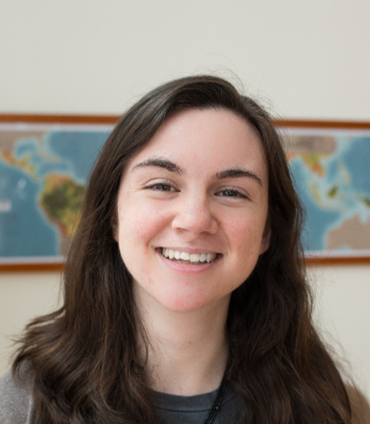 Mary Farina, Montana State University: My name is Mary Farina and I am a PhD student at Montana State University. I attended the virtual AGU Fall Meeting 2020 through support from USPA UPEF. The virtual conference format provided a unique opportunity to connect with others in the permafrost community and spend more time with individual presentations and posters. I presented on the resilience and vulnerability of the regional carbon sink in Alaska and Canada. This was a helpful experience in terms of learning new ways to convey research findings in pre-recorded presentations, and I received valuable feedback on flux model comparisons. This was a great chance to connect with researchers from many different institutes! Mary Farina, Montana State University: My name is Mary Farina and I am a PhD student at Montana State University. I attended the virtual AGU Fall Meeting 2020 through support from USPA UPEF. The virtual conference format provided a unique opportunity to connect with others in the permafrost community and spend more time with individual presentations and posters. I presented on the resilience and vulnerability of the regional carbon sink in Alaska and Canada. This was a helpful experience in terms of learning new ways to convey research findings in pre-recorded presentations, and I received valuable feedback on flux model comparisons. This was a great chance to connect with researchers from many different institutes!
2019 AGU Travel Grant Winners
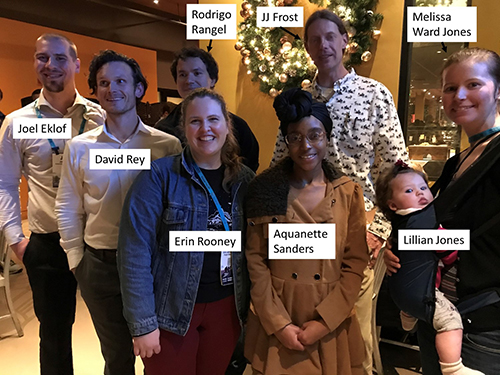 2019 Travel Grant Award Winners. Pictured from left to right the five award winners: Joel Eklof, David Rey, Rodrigo Rangel, Erin Rooney, and Aquanette Sanders; and presenters JJ Frost (rear) and Melissa Ward Jones with Lillian Jones. Photo credit: Cathy Wilson 2019 Travel Grant Award Winners. Pictured from left to right the five award winners: Joel Eklof, David Rey, Rodrigo Rangel, Erin Rooney, and Aquanette Sanders; and presenters JJ Frost (rear) and Melissa Ward Jones with Lillian Jones. Photo credit: Cathy Wilson |
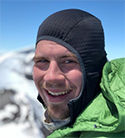 Joel Eklof, University of Washington: Thank you UPEF for the generous travel funding that made attending my first AGU possible. AGU was a fabulous opportunity to connect with members of the permafrost community, receive early feedback on my PhD research, and share new data and results. I presented data recorded just months prior from a discontinuous permafrost site in Alaska's Kenai Wildlife Refuge. These data not only quantified the rapid rate of thaw at the site but provided surprising observations of heat advected into soils during warm rain events abruptly warming and thawing frozen soils. We observed up to 50 cm of thaw at multiple locations directly following a major rain event in late July. I am now planning the next field season and beginning to look through historical datasets across Alaska to determine the effect advective heat transfer by rain may be having at other permafrost sites. Joel Eklof, University of Washington: Thank you UPEF for the generous travel funding that made attending my first AGU possible. AGU was a fabulous opportunity to connect with members of the permafrost community, receive early feedback on my PhD research, and share new data and results. I presented data recorded just months prior from a discontinuous permafrost site in Alaska's Kenai Wildlife Refuge. These data not only quantified the rapid rate of thaw at the site but provided surprising observations of heat advected into soils during warm rain events abruptly warming and thawing frozen soils. We observed up to 50 cm of thaw at multiple locations directly following a major rain event in late July. I am now planning the next field season and beginning to look through historical datasets across Alaska to determine the effect advective heat transfer by rain may be having at other permafrost sites.
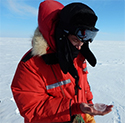 Rodrigo Rangel, University of Wyoming: First, I would like to thank USPA for the grant! In my research we are combining ground-penetrating radar and synthetic aperture radar to constrain the estimates of carbon gas emissions from permafrost lakes, which can help to refine atmospheric carbon models and improve the projections of climate warming. It was my first time giving a talk at the AGU annual meeting and it was a great opportunity to present the initial results of my research. I had the privilege to meet many scientists from multiple areas and countries, which improved my network. Therefore, it was very beneficial for my future project development and to my progress as a geoscientist. Rodrigo Rangel, University of Wyoming: First, I would like to thank USPA for the grant! In my research we are combining ground-penetrating radar and synthetic aperture radar to constrain the estimates of carbon gas emissions from permafrost lakes, which can help to refine atmospheric carbon models and improve the projections of climate warming. It was my first time giving a talk at the AGU annual meeting and it was a great opportunity to present the initial results of my research. I had the privilege to meet many scientists from multiple areas and countries, which improved my network. Therefore, it was very beneficial for my future project development and to my progress as a geoscientist.
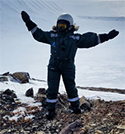 Erin Rooney, Oregon State University: I am a PhD student at Oregon State University and an Oregon State University-Pacific Northwest National Laboratory distinguished graduate research fellow. I study the impact of freeze-thaw cycles on permafrost-affected soils with a focus on soil porosity and redistribution of stable isotopes through microbial action. This was my first time at AGU and the experience was extremely impactful. Over the course of one week I connected with permafrost researchers, shared and discussed findings from our imaging research, and competed in a flash freeze competition. Benefits of presenting my soil porosity data and isotope redistribution experiment included valuable insights from a large variety of cryosphere researchers. The USPA grant partially funded my travel to the conference and connected me with professors and students in the cryosphere community. Erin Rooney, Oregon State University: I am a PhD student at Oregon State University and an Oregon State University-Pacific Northwest National Laboratory distinguished graduate research fellow. I study the impact of freeze-thaw cycles on permafrost-affected soils with a focus on soil porosity and redistribution of stable isotopes through microbial action. This was my first time at AGU and the experience was extremely impactful. Over the course of one week I connected with permafrost researchers, shared and discussed findings from our imaging research, and competed in a flash freeze competition. Benefits of presenting my soil porosity data and isotope redistribution experiment included valuable insights from a large variety of cryosphere researchers. The USPA grant partially funded my travel to the conference and connected me with professors and students in the cryosphere community.
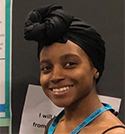 Aquanette Sanders, University of Texas Austin: I am a first year PhD student at the University of Texas at Austin Marine Science Institute. I plan to study the effects of thermokarst features on greenhouse gases in the North Slope of Alaska, using techniques from my presented research. This was my first year attending the AGU fall meeting, and the UPEF Travel Grant helped make this incredible experience possible. I presented research on the effects of thermokarst features on greenhouse gas (nitrous oxide, carbon dioxide, and methane) emissions in the Yukon-Kuskokwim Delta of Alaska. AGU allowed for networking with experts in the field who all gave a lot of feedback and ideas for future research. Additionally, I was able to attend presentations that expanded my knowledge of current research being conducted in the Arctic. I am so excited to continue this journey with the USPA as my career in permafrost research advances. Thank you again to USPA! Aquanette Sanders, University of Texas Austin: I am a first year PhD student at the University of Texas at Austin Marine Science Institute. I plan to study the effects of thermokarst features on greenhouse gases in the North Slope of Alaska, using techniques from my presented research. This was my first year attending the AGU fall meeting, and the UPEF Travel Grant helped make this incredible experience possible. I presented research on the effects of thermokarst features on greenhouse gas (nitrous oxide, carbon dioxide, and methane) emissions in the Yukon-Kuskokwim Delta of Alaska. AGU allowed for networking with experts in the field who all gave a lot of feedback and ideas for future research. Additionally, I was able to attend presentations that expanded my knowledge of current research being conducted in the Arctic. I am so excited to continue this journey with the USPA as my career in permafrost research advances. Thank you again to USPA!
2018 AGU Travel Grant Winners
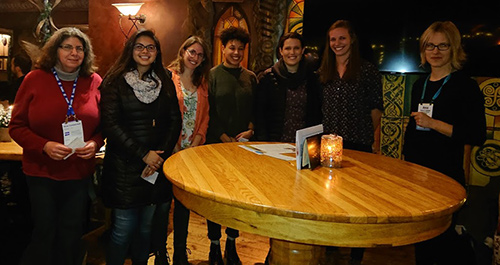 2019 Travel Grant Award Winners. Pictured from left to right: Risa Madoff, Bianca Rodriguez-Cardona, Stephanie James Raven Mitchell, Kelsey Nyland, Brianna Rick, and Anna Liljedahl (USPA President). 2019 Travel Grant Award Winners. Pictured from left to right: Risa Madoff, Bianca Rodriguez-Cardona, Stephanie James Raven Mitchell, Kelsey Nyland, Brianna Rick, and Anna Liljedahl (USPA President). |
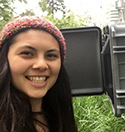 Mia Arvizu, Oregon State University: This was my first year at AGU, and I had a truly incredible experience. This event began with a reunion of my fellow colleagues and a melting pot of excitement as we all equipped ourselves with badges and posters, ready to explore the intricacies of geoscience and to share what knowledge we brought. I was quickly overwhelmed with fascination as I entered the labyrinth of diverse professionals and their detailed discoveries. I made the most of this trip by attending a wide variety of oral presentations, participating in career pathway sessions, and even got the chance to satisfy my artistic interests by creating poems that shared my perspective of science. I greatly appreciated the multitude of options to choose from and the interconnectedness of each session. With many selections to choose from, the one I found most interesting was a session about careers beyond academia. Being an undergraduate, this session broadened my view of how I could apply my degree, and it was also comforting to know there are many opportunities within the geosciences. Focusing more on the present, AGU also helped me share my research with others and simultaneously opened the door for collaboration with other scientists as similarities between projects were discovered. Overall, this has been a wonderful experience that has enhanced my future ideas for projects and has strengthened my network within the Geoscience community. I would also like to thank the US Permafrost Association for kindly carrying some of the travels financial burden. Mia Arvizu, Oregon State University: This was my first year at AGU, and I had a truly incredible experience. This event began with a reunion of my fellow colleagues and a melting pot of excitement as we all equipped ourselves with badges and posters, ready to explore the intricacies of geoscience and to share what knowledge we brought. I was quickly overwhelmed with fascination as I entered the labyrinth of diverse professionals and their detailed discoveries. I made the most of this trip by attending a wide variety of oral presentations, participating in career pathway sessions, and even got the chance to satisfy my artistic interests by creating poems that shared my perspective of science. I greatly appreciated the multitude of options to choose from and the interconnectedness of each session. With many selections to choose from, the one I found most interesting was a session about careers beyond academia. Being an undergraduate, this session broadened my view of how I could apply my degree, and it was also comforting to know there are many opportunities within the geosciences. Focusing more on the present, AGU also helped me share my research with others and simultaneously opened the door for collaboration with other scientists as similarities between projects were discovered. Overall, this has been a wonderful experience that has enhanced my future ideas for projects and has strengthened my network within the Geoscience community. I would also like to thank the US Permafrost Association for kindly carrying some of the travels financial burden.
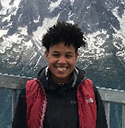 Raven Mitchell, Michigan State University: I am a master's student at Michigan State University where I study in the Department of Geography, Environment, and Spatial Sciences. Thanks to the funding from the United States Permafrost Association, I was able to experience the benefits of attending the 2018 American Geophysical Union Fall Meeting in Washington D.C. Some of my most noteworthy experiences include presenting research on last 25 years of the Circumpolar Active Layer Monitoring Network, in addition to attending the USPA annual meeting where I was able to meet leaders in permafrost research and some of new friends. During my time at AGU, I gained skills in presenting research as well as receiving feedback that will help to enhance my future work in permafrost science. I am grateful to have received funding from the USPA so that I could have been afforded this valuable experience. Raven Mitchell, Michigan State University: I am a master's student at Michigan State University where I study in the Department of Geography, Environment, and Spatial Sciences. Thanks to the funding from the United States Permafrost Association, I was able to experience the benefits of attending the 2018 American Geophysical Union Fall Meeting in Washington D.C. Some of my most noteworthy experiences include presenting research on last 25 years of the Circumpolar Active Layer Monitoring Network, in addition to attending the USPA annual meeting where I was able to meet leaders in permafrost research and some of new friends. During my time at AGU, I gained skills in presenting research as well as receiving feedback that will help to enhance my future work in permafrost science. I am grateful to have received funding from the USPA so that I could have been afforded this valuable experience.
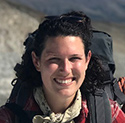 Kelsey Nyland, Michigan State University: I would like to thank the USPA for travel funding that made it possible for me to present findings from my doctoral dissertation at the 2018 AGU Fall meeting. I received excellent feedback after my oral presentation and valuable networking experience, particularly at the USPA reception. The USPA has played a key role in my education as a permafrost scientist by supporting my travel to international conferences, including the 2012 TICOP as an undergraduate and the 2015 AGU when I was a master's student. I look forward to giving back to the association by serving in new roles as I start my career in permafrost science. Kelsey Nyland, Michigan State University: I would like to thank the USPA for travel funding that made it possible for me to present findings from my doctoral dissertation at the 2018 AGU Fall meeting. I received excellent feedback after my oral presentation and valuable networking experience, particularly at the USPA reception. The USPA has played a key role in my education as a permafrost scientist by supporting my travel to international conferences, including the 2012 TICOP as an undergraduate and the 2015 AGU when I was a master's student. I look forward to giving back to the association by serving in new roles as I start my career in permafrost science.
 Bianca Rodriquez-Cardona, University of New Hampshire: Presenting at the 2018 AGU meeting was a great success. During my poster presentation I had frequent visitors from different field of research which made out interactions very interesting. AGU is always great to see and hear what other folks in Arctic related research are up to, and there was plenty to to see this past AGU, especially Arctic fire related research. I also had the opportunity to see and chat with past colleagues and plan future field work and collaborative endeavors. Bianca Rodriquez-Cardona, University of New Hampshire: Presenting at the 2018 AGU meeting was a great success. During my poster presentation I had frequent visitors from different field of research which made out interactions very interesting. AGU is always great to see and hear what other folks in Arctic related research are up to, and there was plenty to to see this past AGU, especially Arctic fire related research. I also had the opportunity to see and chat with past colleagues and plan future field work and collaborative endeavors.
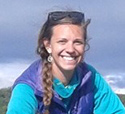 Brianna Rick, Colorado State University: Thank you so much to USPA for the travel support, making my first attendance at AGU possible. I am currently a PhD student at Colorado State University in the Geosciences Department. At AGU 2018, I presented on my Master's work looking at the trends and interactions of observed air, soil-surface temperature, and active-layer thickness at Toolik Lake on the Alaskan North Slope between 1995 and 2018, as well as vegetation change over time. I am now beginning my dissertation research investigating rock glaciers and alpine permafrost as cold-water reservoirs in alpine basins, and their seasonal contribution to streamflow. AGU was incredibly beneficial for me to speak with others interested in alpine permafrost and rock glaciers, as well as share the results of my previous work. I also attended sessions on science communication and education, and look forward to utilizing the resources and techniques presented. Thanks again to USPA for the support! Brianna Rick, Colorado State University: Thank you so much to USPA for the travel support, making my first attendance at AGU possible. I am currently a PhD student at Colorado State University in the Geosciences Department. At AGU 2018, I presented on my Master's work looking at the trends and interactions of observed air, soil-surface temperature, and active-layer thickness at Toolik Lake on the Alaskan North Slope between 1995 and 2018, as well as vegetation change over time. I am now beginning my dissertation research investigating rock glaciers and alpine permafrost as cold-water reservoirs in alpine basins, and their seasonal contribution to streamflow. AGU was incredibly beneficial for me to speak with others interested in alpine permafrost and rock glaciers, as well as share the results of my previous work. I also attended sessions on science communication and education, and look forward to utilizing the resources and techniques presented. Thanks again to USPA for the support!
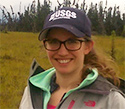 Stephanie James, United States Geological Survey (USGS): Attending the American Geophysical Union Fall Meeting has always been a profoundly beneficial and educational experience, and this year in Washington D.C. proved no different. I made important connections with existing colleagues and collaborators from across the globe, learned about exciting new developments in my areas of expertise, and established new professional relationships. Since my research interests are very diverse, the breadth and scale provided by AGU was a unique opportunity for me to network and connect with multiple science communities (seismology, near-surface geophysics, cryosphere, and hydrology) and explore cutting-edge research across a range of disciplines. This year's AGU was especially important since I am a postdoctoral researcher working to establish myself as a principal scientist and develop my research skills and prospects. This year, I was co-convener and chair of a session for the first time, as well as judge and liaison for numerous student presentations through the OSPA program. These activities were incredible learning experiences and have given me the confidence to take on similar roles again in future meetings. These leadership roles, as well as my own research talk, also provided me with valuable exposure which has already resulted in new professional connections that could lead to exciting new research opportunities in the future. Stephanie James, United States Geological Survey (USGS): Attending the American Geophysical Union Fall Meeting has always been a profoundly beneficial and educational experience, and this year in Washington D.C. proved no different. I made important connections with existing colleagues and collaborators from across the globe, learned about exciting new developments in my areas of expertise, and established new professional relationships. Since my research interests are very diverse, the breadth and scale provided by AGU was a unique opportunity for me to network and connect with multiple science communities (seismology, near-surface geophysics, cryosphere, and hydrology) and explore cutting-edge research across a range of disciplines. This year's AGU was especially important since I am a postdoctoral researcher working to establish myself as a principal scientist and develop my research skills and prospects. This year, I was co-convener and chair of a session for the first time, as well as judge and liaison for numerous student presentations through the OSPA program. These activities were incredible learning experiences and have given me the confidence to take on similar roles again in future meetings. These leadership roles, as well as my own research talk, also provided me with valuable exposure which has already resulted in new professional connections that could lead to exciting new research opportunities in the future.
2018 EUCOP Travel Grant Winners
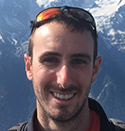 Clayton Queen (Masters Student), Michigan State University: Funding from the United States Permafrost Association was a major factor in allowing me to attend the European Conference on Permafrost. I have spent the past couple of years as a master's student at Michigan State University (MSU) Department of Geography, Environment, and Spatial Sciences. Clayton Queen (Masters Student), Michigan State University: Funding from the United States Permafrost Association was a major factor in allowing me to attend the European Conference on Permafrost. I have spent the past couple of years as a master's student at Michigan State University (MSU) Department of Geography, Environment, and Spatial Sciences.
My research is focused on alpine periglacial landforms known as cryoplanation terraces (CTs). Best developed across Beringia, CTs are thought to form through localized weathering processes associated with late-lying bodies of snow. These processes erode ridgecrests and hillsides in such a way that they create large terraces and give the impression of giant staircases ascending ridgecrests and mountainsides. Until recently, research on this landform has been limited to descriptive studies, with few field-based process-oriented investigations. My project focuses on detailed mapping and geomorphometric studies of these features. The experience at EUCOP was highly valuable for my academic and professional development. Being able to present my research to colleagues with similar interests allowed me to receive some excellent feedback and establish new ideas that will lead to further research.
 Rebecca Frei (Undergraduate Student), Brigham Young University: I am an undergraduate student at Brigham Young University studying ecosystem ecology and biogeochemistry. I presented on the propagation of dissolved organic matter through headwater catchments in Arctic Alaska in response to permafrost degradation. EUCOP was my first large scientific conference, and it was also my first time giving an oral presentation to a scientific audience. At times the conference was overwhelming, but I was very impressed by the kindness and generosity of the community. Being in Chamonix was the proverbial cherry on top and I loved learning from local experts about the changes in the mountains and valley in response to permafrost degradation. I also participated in the PYRN workshop which was really nice to be surrounded by other young researchers. Thanks to the USPA travel grant, I was able to have the funds to make this experience possible. As a result, I feel much more connected to the permafrost community and inspired to continue learning and researching about this precious ecosystem. Rebecca Frei (Undergraduate Student), Brigham Young University: I am an undergraduate student at Brigham Young University studying ecosystem ecology and biogeochemistry. I presented on the propagation of dissolved organic matter through headwater catchments in Arctic Alaska in response to permafrost degradation. EUCOP was my first large scientific conference, and it was also my first time giving an oral presentation to a scientific audience. At times the conference was overwhelming, but I was very impressed by the kindness and generosity of the community. Being in Chamonix was the proverbial cherry on top and I loved learning from local experts about the changes in the mountains and valley in response to permafrost degradation. I also participated in the PYRN workshop which was really nice to be surrounded by other young researchers. Thanks to the USPA travel grant, I was able to have the funds to make this experience possible. As a result, I feel much more connected to the permafrost community and inspired to continue learning and researching about this precious ecosystem.
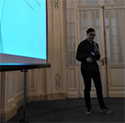 Matvey Debolskiy (Doctoral Student), University of Alaska Fairbanks: I am Matvey Debolskiy. Ph.D. student at the University of Alaska, Fairbanks. I study permafrost and permafrost hydrology in Alaska. I presented my recent work on permafrost modeling of Seward Peninsula, Alaska the EUCOP. The overall experience was great, I have received valuable feedback on my research and made some new connections with the researchers in the same field. The USPA grant helped me to actually get there to this conference which I highly appreciate. Matvey Debolskiy (Doctoral Student), University of Alaska Fairbanks: I am Matvey Debolskiy. Ph.D. student at the University of Alaska, Fairbanks. I study permafrost and permafrost hydrology in Alaska. I presented my recent work on permafrost modeling of Seward Peninsula, Alaska the EUCOP. The overall experience was great, I have received valuable feedback on my research and made some new connections with the researchers in the same field. The USPA grant helped me to actually get there to this conference which I highly appreciate.
2017 AGU Travel Grant Winners
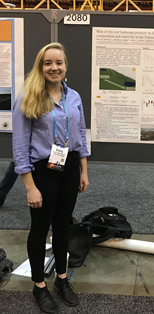 Emily Bristol, St. Olaf College: This year at AGU, I presented a poster from research I completed with the Polaris Project, a group of students and scientists studying climate change in the arctic. Field work was completed in the Yukon-Kuskokwim Delta, a region underlain by warm permafrost that is vulnerable to thaw induced by climate change and recent wildfires. Using data collected in the field and a water incubation experiment, I explored the differences in DOC composition in burned and unburned watersheds, and compared the bioavailability and photoreactivity of DOC in water collected at different landscape positions. Using UV-vis absorbance data, my project suggests that DOC has lower molecular weight and aromaticity in burned watersheds, that DOC in unburned watersheds is more photochemically reactive, and that photochemical reactivity decreases along flow paths. Lastly, DOC losses were greatest when water samples were exposed to UV radiation followed by a bacterial inoculum, suggesting that light primes DOC for microbial respiration. Being able to attend AGU this year was a wonderful opportunity to discuss my research with other scientists, reconnect with colleagues, and learn about other research happening in the field. I focused on attending poster and oral sessions related to permafrost and biogeochemical processes in northern latitudes. Not only was I learning about new methods and interesting research findings, I was able to network with other students and scientists. Being at AGU was an extremely valuable experience to help me grow as a scientist and prepare for a research career. A huge thanks to the USPA for making my travel to New Orleans possible! Emily Bristol, St. Olaf College: This year at AGU, I presented a poster from research I completed with the Polaris Project, a group of students and scientists studying climate change in the arctic. Field work was completed in the Yukon-Kuskokwim Delta, a region underlain by warm permafrost that is vulnerable to thaw induced by climate change and recent wildfires. Using data collected in the field and a water incubation experiment, I explored the differences in DOC composition in burned and unburned watersheds, and compared the bioavailability and photoreactivity of DOC in water collected at different landscape positions. Using UV-vis absorbance data, my project suggests that DOC has lower molecular weight and aromaticity in burned watersheds, that DOC in unburned watersheds is more photochemically reactive, and that photochemical reactivity decreases along flow paths. Lastly, DOC losses were greatest when water samples were exposed to UV radiation followed by a bacterial inoculum, suggesting that light primes DOC for microbial respiration. Being able to attend AGU this year was a wonderful opportunity to discuss my research with other scientists, reconnect with colleagues, and learn about other research happening in the field. I focused on attending poster and oral sessions related to permafrost and biogeochemical processes in northern latitudes. Not only was I learning about new methods and interesting research findings, I was able to network with other students and scientists. Being at AGU was an extremely valuable experience to help me grow as a scientist and prepare for a research career. A huge thanks to the USPA for making my travel to New Orleans possible!
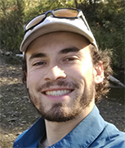 Shawn Pedron, University of California, Irvine: Our current understanding of sources and ages of Arctic CO2 emissions is largely based on radiocarbon (14C) measurements during the summer, which are typically collected over short periods (i.e., several hours). However, research by our team, reported the importance of winter emissions in CO2 processes and budgets, causing the Arctic community to recognize the role of winter in C fluxes. The ages and sources of winter emissions are totally unresolved today and may provide insight as to how permafrost thaw may be leading to a much stronger interaction between the ancient and modern C cycles, in large part because winter is the dominant season in the Arctic, lasting in some cases for 3/4 of the calendar year. There is also evidence that pulsed CO2 emissions (freeze-thaw cycles, rain events) contribute to emissions of ancient C2. In this research, we present first steps toward adopting a quasi-continuous passive 14CO2 sampler for deployment in Arctic tundra, with the goal of quantifying major uncertainties in year-round ecosystem C emissions. My AGU experience was a mixed bag. I was waiting on some preliminary data until the weekend before the conference, so I was actually finishing my poster during AGU, which was quite stressful. Once that was complete, I thoroughly enjoyed the conference, as well as the location. I appreciated that permafrost sessions were often collocated with soil biogeochemistry sessions, enabling me to view sessions from many relevant new and established areas of research. The poster sessions were also well-organized, and the AGU conference app made planning simple. I had a great time at the USPA Annual Meeting, where I met some members and saw some familiar faces as well, and was treated to food and drinks. New Orleans was a fun location, with live music, unique culture, and old architecture everywhere, and many opportunities for sight-seeing. Thank you for the opportunity to attend provided by the USPA Travel Grant award! Shawn Pedron, University of California, Irvine: Our current understanding of sources and ages of Arctic CO2 emissions is largely based on radiocarbon (14C) measurements during the summer, which are typically collected over short periods (i.e., several hours). However, research by our team, reported the importance of winter emissions in CO2 processes and budgets, causing the Arctic community to recognize the role of winter in C fluxes. The ages and sources of winter emissions are totally unresolved today and may provide insight as to how permafrost thaw may be leading to a much stronger interaction between the ancient and modern C cycles, in large part because winter is the dominant season in the Arctic, lasting in some cases for 3/4 of the calendar year. There is also evidence that pulsed CO2 emissions (freeze-thaw cycles, rain events) contribute to emissions of ancient C2. In this research, we present first steps toward adopting a quasi-continuous passive 14CO2 sampler for deployment in Arctic tundra, with the goal of quantifying major uncertainties in year-round ecosystem C emissions. My AGU experience was a mixed bag. I was waiting on some preliminary data until the weekend before the conference, so I was actually finishing my poster during AGU, which was quite stressful. Once that was complete, I thoroughly enjoyed the conference, as well as the location. I appreciated that permafrost sessions were often collocated with soil biogeochemistry sessions, enabling me to view sessions from many relevant new and established areas of research. The poster sessions were also well-organized, and the AGU conference app made planning simple. I had a great time at the USPA Annual Meeting, where I met some members and saw some familiar faces as well, and was treated to food and drinks. New Orleans was a fun location, with live music, unique culture, and old architecture everywhere, and many opportunities for sight-seeing. Thank you for the opportunity to attend provided by the USPA Travel Grant award!
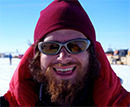 Neil Foley, University of California, Santa Cruz: I'm tremendously thankful to USPA for awarding me a travel grant for the 2017 AGU Fall Meeting. This meeting was an important one for me. I'm beginning to to look for post-doctoral positions, am in the midst of an interdisciplinary project that requires meeting with many collaborators, and chaired a new session on the phase transitions of water in polar deserts (my poster and a few others investigated permafrost in the McMurdo Dry Valleys, Antarctica). All of these things went well, and the rest of the meeting was useful as always. My funding is drying up as I finish my PhD; this travel grant eased to burden of attending the meeting greatly and is helping me finish on time and well position for future research in permafrost. I hope maybe I'll see some abstracts from USPA members next year when I chair my session again! Neil Foley, University of California, Santa Cruz: I'm tremendously thankful to USPA for awarding me a travel grant for the 2017 AGU Fall Meeting. This meeting was an important one for me. I'm beginning to to look for post-doctoral positions, am in the midst of an interdisciplinary project that requires meeting with many collaborators, and chaired a new session on the phase transitions of water in polar deserts (my poster and a few others investigated permafrost in the McMurdo Dry Valleys, Antarctica). All of these things went well, and the rest of the meeting was useful as always. My funding is drying up as I finish my PhD; this travel grant eased to burden of attending the meeting greatly and is helping me finish on time and well position for future research in permafrost. I hope maybe I'll see some abstracts from USPA members next year when I chair my session again!
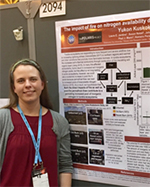 Laura Jardine, Oklahoma City University: I am an undergraduate studying biology at Oklahoma City University. Through the Polaris Project, I had the opportunity to develop a project focused on how wildfires impact permafrost thaw and nitrogen availability in the Yukon-Kuskokwim Delta, Alaska this summer. Our field site was situated near unburned areas as well as two- and 45-year-old burn scars. I found that fire results in larger pools of bioavailable nitrogen through increased mineralization both immediately and decades following fire. The long-term increase is not seen in non-permafrost fire-affected ecosystems and can likely be attributed to fire-induced permafrost degradation. Being able to share this research at AGU with the help of the USPA's student travel grant was both exciting and productive. Through my conversations during my poster session, I generated many ideas for improving my analyses and interpretation of my results. Additionally, having the opportunity to attend so many interesting sessions about the vulnerability of arctic ecosystems and permafrost was both thought-provoking and energizing as a young researcher. I'm so thankful to have attended AGU this year, and I'm especially grateful for the USPA's financial assistance that helped get me there! Laura Jardine, Oklahoma City University: I am an undergraduate studying biology at Oklahoma City University. Through the Polaris Project, I had the opportunity to develop a project focused on how wildfires impact permafrost thaw and nitrogen availability in the Yukon-Kuskokwim Delta, Alaska this summer. Our field site was situated near unburned areas as well as two- and 45-year-old burn scars. I found that fire results in larger pools of bioavailable nitrogen through increased mineralization both immediately and decades following fire. The long-term increase is not seen in non-permafrost fire-affected ecosystems and can likely be attributed to fire-induced permafrost degradation. Being able to share this research at AGU with the help of the USPA's student travel grant was both exciting and productive. Through my conversations during my poster session, I generated many ideas for improving my analyses and interpretation of my results. Additionally, having the opportunity to attend so many interesting sessions about the vulnerability of arctic ecosystems and permafrost was both thought-provoking and energizing as a young researcher. I'm so thankful to have attended AGU this year, and I'm especially grateful for the USPA's financial assistance that helped get me there!
 Nate Lindsey, University of California, Berkeley: My research aims to observe and explain interesting and important physical processes on Earth. In 2016, alongside colleagues at Lawrence Berkeley National Laboratory and the U.S. Army Corps of Engineer's Cold Regions Research and Engineering Laboratory, we artificially thawed a zone of permafrost in Fairbanks, Alaska. The goal of this fieldscale experiment was to understand the geophysical signals of the permafrost thaw process. A key piece of this experiment was the deployment of a new type of distributed fiber-optic sensor technology that enabled data recording of seismic waves, temperature, and strain at over 5000 positions across the space of a football field, a small portion of which was artificially warmed. At the 2017 Fall Meeting of the AGU, I had the opportunity to share observations from this experiment with two very different scientific communities -- members of the Seismology and Cryosphere Sections. This unique forum was a rich and memorable experience. I would like to thank the US Permafrost Association for the sponsorship of my student travel grant. Nate Lindsey, University of California, Berkeley: My research aims to observe and explain interesting and important physical processes on Earth. In 2016, alongside colleagues at Lawrence Berkeley National Laboratory and the U.S. Army Corps of Engineer's Cold Regions Research and Engineering Laboratory, we artificially thawed a zone of permafrost in Fairbanks, Alaska. The goal of this fieldscale experiment was to understand the geophysical signals of the permafrost thaw process. A key piece of this experiment was the deployment of a new type of distributed fiber-optic sensor technology that enabled data recording of seismic waves, temperature, and strain at over 5000 positions across the space of a football field, a small portion of which was artificially warmed. At the 2017 Fall Meeting of the AGU, I had the opportunity to share observations from this experiment with two very different scientific communities -- members of the Seismology and Cryosphere Sections. This unique forum was a rich and memorable experience. I would like to thank the US Permafrost Association for the sponsorship of my student travel grant.
2015 AGU Travel Grant Winners
|
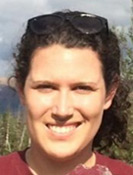 Kelsey Nyland, Michigan State University Kelsey Nyland, Michigan State University
Presentation Title: Spatial Analysis of Cryoplanation Landforms in Beringian Uplands, Alaska, USA
|
|
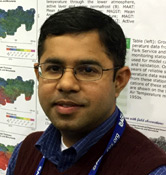 Dr. Santosh Panda, University of Alaska Fairbanks Dr. Santosh Panda, University of Alaska Fairbanks
Presentation Title: Forecast of Permafrost Distribution, Temperature and Active Layer Thickness for Arctic National Parks of Alaska through 2100
|
|
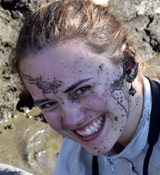 Megan Behnke, St. Olaf College Megan Behnke, St. Olaf College
Presentation Title: Photooxidation and Microbial Processing of Ancient and Modern Dissolved Organic Carbon in the Kolyma River, Siberia
|
|
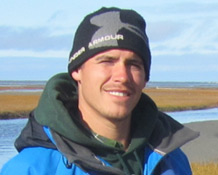 Neal Pastick, University of Minnesota Neal Pastick, University of Minnesota
Presentation Title: Towards a better understanding of the sensitivity of permafrost and soil carbon to climate and disturbance
|
|
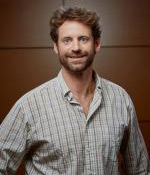 Dr. Andrew Balser, Oak Ridge National Laboratory Dr. Andrew Balser, Oak Ridge National Laboratory
Presentation Title: Drivers and Estimates of Terrain Suitability for Active Layer Detachment Slides and Retrogressive Thaw
|
|
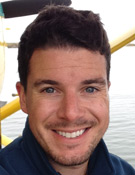 Clayton Elder, University of California Irvine Clayton Elder, University of California Irvine
Presentation Title: Holocene-Age Methane and Carbon Dioxide Dominate Northern Alaska Thaw Lake Emissions
|
|
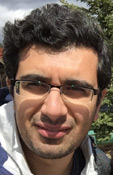 Dr. Elchin Jafarov, University of Colorado Boulder Dr. Elchin Jafarov, University of Colorado Boulder
Presentation Title: Temperature Increase due to the Permafrost Carbon Feedback
|
|
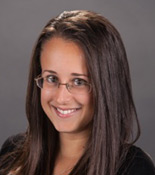 Elaine Pegararo, Northern Arizona University Elaine Pegararo, Northern Arizona University
Presentation Title: Priming-induced changes in permafrost soil organic matter decomposition
|
2015 Early Career Grant Winners
|
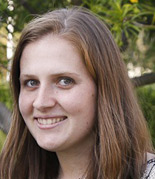 Alison Hoyt (PhD Candidate), Department of Environmental Engineering, Massachusetts Institute of Technology Alison Hoyt (PhD Candidate), Department of Environmental Engineering, Massachusetts Institute of Technology
Field Research: Understanding CH4 production and transport in permafrost peatlands.
Field Location: Igarka, Krasnoyark Krai, Russia, PI Melnikov Permafrost Institute
|
|
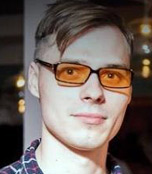 Matvey Debolskiy (PhD Candidate), Geophysics, University of Alaska Fairbanks Matvey Debolskiy (PhD Candidate), Geophysics, University of Alaska Fairbanks
Presentation Title: Forecast of Permafrost Distribution, Temperature and Active Layer Thickness for Arctic National Parks of Alaska through 2100
|
|
 Clayton Elder (PhD Candidate), Earth System Science, University of California, Irvine Clayton Elder (PhD Candidate), Earth System Science, University of California, Irvine
Field Research: Understanding the fractional contribution of old, decaying organic carbon to whole-lake methane and carbon dioxide emissions.
Field Location: Thermokarst Lakes near Fairbanks, Alaska
|
2014 AGU Travel Grant Winners
|
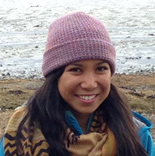 Kristine de Leon, University of Arizona Kristine de Leon, University of Arizona
Presentation Title: The Impact of Climate Change on Microbial Communities and Carbon Cycling in High Arctic Permafrost Soil from Spitsbergen, Northern Norway
|
|
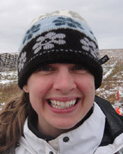 Dr. Sandra Holden, University of California, Irvine Dr. Sandra Holden, University of California, Irvine
Presentation Title: Shrub Expansion in Arctic Alaska Alters the Sources (14C) and Magnitudes of Ecosystem Respiration in the Continuous Permafrost Zone
|
|
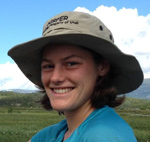 Moira Hough, University of Arizona Moira Hough, University of Arizona
Presentation Title: Can Plant Community Turnover Mitigate Permafrost Thaw Feedbacks to the Climate System?
|
|
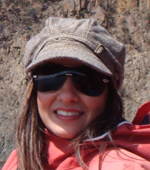 Dr. Aram Kalhori, San Diego State University Dr. Aram Kalhori, San Diego State University
Presentation Title: Heterogeneity of CH4 and Net CO2 Fluxes Using Nested Chamber, Tower, Aircraft, Remote Sensing, And Modeling Approaches in Arctic ALaska (Dr. Kalhori, co-author)
|
|
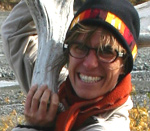 Dr. Marguerite Mauritz, University of Florida Dr. Marguerite Mauritz, University of Florida
Presentation Title: Ecosystem Carbon Dynamics in Response to Five Winters of Experimental Soil Warming and Permafrost Degradation
|
|
 Seth Spawn, Woods Hole Research Center Seth Spawn, Woods Hole Research Center
Presentation Title: Ebullition of CO2 and CH4 from an Upland Stream Network in Northeast Siberia
|
|
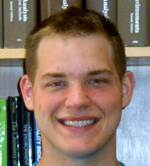 Gary Trubl, University of Arizona Gary Trubl, University of Arizona
Presentation Title: Exploring Viral Mediated Carbon Cycling in Thawing Permafrost Microbial Communities
|
2014 Early Career Grant Winners
|
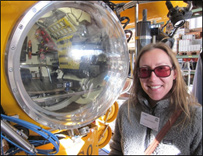 Dr. Jennifer Frederick (Post-doc), Geohydrology, Desert Research Institute, Reno, NV Dr. Jennifer Frederick (Post-doc), Geohydrology, Desert Research Institute, Reno, NV
Presentation Title: Effect of submarine groundwater discharge on relict Arctic submarine permafrost, European Conference on Permafrost, Evora, Portugal, June 2014
|
|
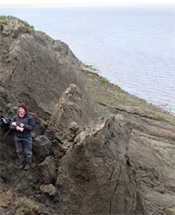 Louise Farquharson (PhD Candidate), University of Alaska Fairbanks Louise Farquharson (PhD Candidate), University of Alaska Fairbanks
Presentation Title: Understanding coastal dynamics along a permafrost affected coastline in northwestern Alaska, USA, European Conference on Permafrost, Evora, Portugal, June 2014
|
|
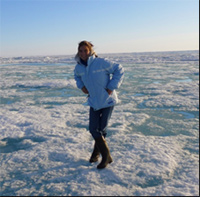 Dr. Virginie Moreaux (Post-doc), Biology, San Diego State University Dr. Virginie Moreaux (Post-doc), Biology, San Diego State University
Field Research: Impacts of near-surface permafrost evolution on carbon fluxes along a latitudinal gradient, Barrow, Atgqasuk, and Ivotuk, Alaska, Summer 2014
|
2013 AGU Travel Grant Winners
|
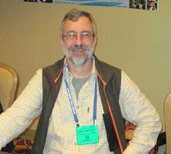 Mark Demitroff, University of Delaware Mark Demitroff, University of Delaware
Presentation Title: Pleistocene wind-action and periglacial phenomena in sandy terrain, New Jersey Pine Barrens
|
|
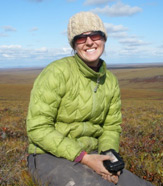 Jessica Ernakovich, Colorado State University Jessica Ernakovich, Colorado State University
Presentation Title: The temperature sensitivity of microbial respiration after permafrost thaw under oxic and anoxic conditions
|
|
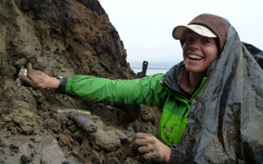 Louise Farquharson, University of Alaska Fairbanks Louise Farquharson, University of Alaska Fairbanks
Presentation Title: Spatial distribution of thermokarst landforms across Arctic Alaska
|
|
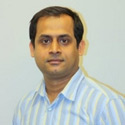 Santonu Goswami, Oak Ridge National Laboratory Santonu Goswami, Oak Ridge National Laboratory
Presentation Title: Spectral characterization of disturbance gradients in permafrost landscapes using ground-based remote sensing and satellite imagery: Initial results from the central Seward Peninsula, Alaska
|
|
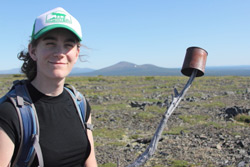 Sarah Ludwig, University of Alaska Fairbanks Sarah Ludwig, University of Alaska Fairbanks
Presentation Title: Fire Effects on Microbial Dynamics and C, N, and P Cycling in Larch Forests of the Siberian Arctic
|
|
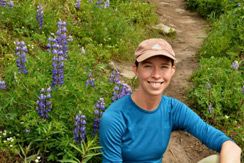 Caitlin Rushlow, Idaho State University Caitlin Rushlow, Idaho State University
Presentation Title: Arctic hillslope hydrologic response to changing water storage conditions
|
|
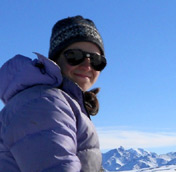 Elizabeth Webb, University of Florida Elizabeth Webb, University of Florida
Presentation Title: Wintertime ecosystem respiration shifts tundra from carbon sink to carbon source at tundra warming experiment
|
2012 AGU Travel Grant Winners
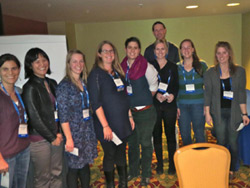 2012 AGU Travel Grant Award Winners. 2012 AGU Travel Grant Award Winners. |
|
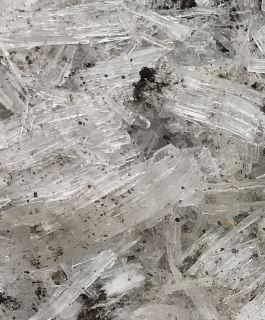 Amanda Barker, University of Alaska Fairbanks Amanda Barker, University of Alaska Fairbanks
Presentation Title: Influence of Permafrost Active Layer Dynamics on Trace Metals in Two Small Alaskan Arctic Rivers
|
|
 Katherine Barnhart, University of Colorado Katherine Barnhart, University of Colorado
Presentation Title: Relationship between environmental conditions and rates of coastal erosion in Arctic Alaska
|
|
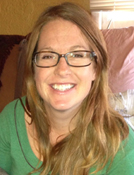 Jessica Ernakovich, Colorado State University Jessica Ernakovich, Colorado State University
Presentation Titles:
1) Responses of arctic and alpine ecosystems to altered seasonality under climate change (Invited).
2) The relationship between species and functional diversity for permafrost and active layer Arctic microorganisms: implications for decomposition in response to warming (Invited)
|
|
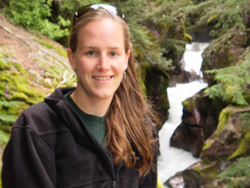 Carmel Johnston, Montana State University Carmel Johnston, Montana State University
Presentation Title: Methane Emission through Diffusion and Ebullition in Thaw Wetlands in Interior Alaska
|
|
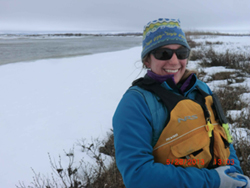 Erica Lamb, University of Alaska Fairbanks Erica Lamb, University of Alaska Fairbanks
Presentation Title: An initial assessment of suspended sediment transport on rivers in interior Arctic Alaska
|
|
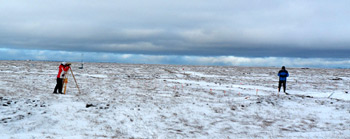 Hanna Lee, National Center for Atmospheric Research Hanna Lee, National Center for Atmospheric Research
Presentation Titles:
1) Modeling excess ice and thermokarst in the Community Land Model
2) Temperature sensitivity of CO2, CH4, CO, and H2 release during photodegradation of organic material (Invited)
|
|
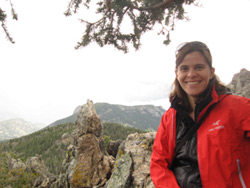 Christina Schaedel, University of Florida Christina Schaedel, University of Florida
Presentation Title: Pan-arctic permafrost C quality and vulnerability over time: A synthesis of long-term incubation studies (Invited)
|
|
 Eva Stephani, University of Alaska Fairbanks Eva Stephani, University of Alaska Fairbanks
Presentation Title: Cryofacies evidences of a Yedoma (?) development during the last glacial maximum in Yukon (Canada) along the current Alaska border
|
Tenth International Conference on Permafrost (TICOP), Salekhard, Russia, June 2012
|
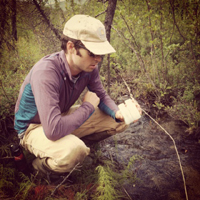 Ben Abbott, University of Alaska Fairbanks Ben Abbott, University of Alaska Fairbanks
Presentation Title: An integrated assessment of the influences of upland thermoerosional features on landscape structure and function in the foothills of the Brooks Range, Alaska
|
|
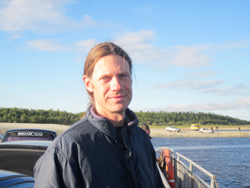 Gerald (JJ) Frost, University of Virginia Gerald (JJ) Frost, University of Virginia
Presentation Title: Linkages between patterned ground, alder shrubland development, and active layer temperature in the northwest Siberian Low Arctic
|
|
 Burke Minsley, US Geological Survey Burke Minsley, US Geological Survey
Presentation Title: Airborne electromagnetic mapping of the 3-D distribution of permafrost in the Yukon Basin, Alaska
|
|
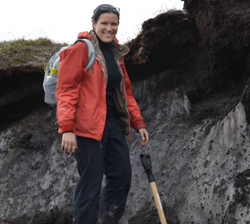 Kelsey Nyland, George Washington University Kelsey Nyland, George Washington University
Presentation Title: Effect of vegetation on soil-surface temperatures in northern Alaska
|
|
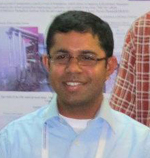 Santosh Panda, University of Alaska Fairbanks Santosh Panda, University of Alaska Fairbanks
Presentation Title: Application of electromagnetic (EM) resistivity data for near-surface permafrost mapping in a pilot study area, Interior Alaska
|
|
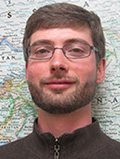 Dmitry Streletskiy, George Washington University Dmitry Streletskiy, George Washington University
Presentation Title: Infrastructure and a changing climate in the Russian Arctic: A geographic impact assessment
|
|
 Xiaozhen Xiong, National Environmental Satellite, Data, and Information Service Xiaozhen Xiong, National Environmental Satellite, Data, and Information Service
Presentation Title: Atmospheric methane in the high northern hemisphere and its relationship to permafrost
|
|


 Zena Robert, Montana State University
Zena Robert, Montana State University Sam Bratsman, University of New Hampshire
Sam Bratsman, University of New Hampshire Ben Maglio, University of Alaska Fairbanks
Ben Maglio, University of Alaska Fairbanks Soumitra Sakhalkar, University of Alaska Fairbanks
Soumitra Sakhalkar, University of Alaska Fairbanks




 Katie Braun, University of Wisconsin-Madison
Katie Braun, University of Wisconsin-Madison





 Sayadeh Sara Sayedi, Brigham Young University: I am Sayedeh Sara Sayedi, a PhD candidate at Brigham Young University. My research is about subsea permafrost carbon stocks and climate change sensitivity. With the help of the USPA, I had the opportunity to present at the AGU2020. Even though AGU2020 was completely virtual, it was a great experience. During our session, I presented my work and had the opportunity to learn about others research. More than 70 participants were in our session and we had a great discussion at the end with all presenters and participants. It is always great to meet other researchers and become familiar with the latest research that is conducted around the world.
Sayadeh Sara Sayedi, Brigham Young University: I am Sayedeh Sara Sayedi, a PhD candidate at Brigham Young University. My research is about subsea permafrost carbon stocks and climate change sensitivity. With the help of the USPA, I had the opportunity to present at the AGU2020. Even though AGU2020 was completely virtual, it was a great experience. During our session, I presented my work and had the opportunity to learn about others research. More than 70 participants were in our session and we had a great discussion at the end with all presenters and participants. It is always great to meet other researchers and become familiar with the latest research that is conducted around the world. Raven Mitchell, Michigan State University: My name is Raven Mitchell and I am a PhD Student at Michigan State University. This fall I had the great opportunity to virtually attend the AGU annual meeting. I presented two posters where I received valuable input from Arctic researchers via the live chat forum. This feedback will help to improve my research going forward. In addition, I participated in the Student Flash Freeze Competition sponsored by the Cryosphere Specialty group where I was awarded a mini-grant to help fund my future research. I am grateful to the USPA for supporting my participation in this important experience.
Raven Mitchell, Michigan State University: My name is Raven Mitchell and I am a PhD Student at Michigan State University. This fall I had the great opportunity to virtually attend the AGU annual meeting. I presented two posters where I received valuable input from Arctic researchers via the live chat forum. This feedback will help to improve my research going forward. In addition, I participated in the Student Flash Freeze Competition sponsored by the Cryosphere Specialty group where I was awarded a mini-grant to help fund my future research. I am grateful to the USPA for supporting my participation in this important experience. Allison Trcka, Portland State University: My name is Allison Trcka and I am a masters student at Portland State University. I am researching the topography and climate of rock glaciers. My experience at the AGU meetings was unique. Due to work I was not able to attend most of the meeting. Typically, I would have missed sessions that I was interested in, but due to the meeting being virtual I was able to go back and attend all the sessions that I missed. It was nice to go back and re-watch and read the oral presentations and posters as many times that I want.
Allison Trcka, Portland State University: My name is Allison Trcka and I am a masters student at Portland State University. I am researching the topography and climate of rock glaciers. My experience at the AGU meetings was unique. Due to work I was not able to attend most of the meeting. Typically, I would have missed sessions that I was interested in, but due to the meeting being virtual I was able to go back and attend all the sessions that I missed. It was nice to go back and re-watch and read the oral presentations and posters as many times that I want. Mary Farina, Montana State University: My name is Mary Farina and I am a PhD student at Montana State University. I attended the virtual AGU Fall Meeting 2020 through support from USPA UPEF. The virtual conference format provided a unique opportunity to connect with others in the permafrost community and spend more time with individual presentations and posters. I presented on the resilience and vulnerability of the regional carbon sink in Alaska and Canada. This was a helpful experience in terms of learning new ways to convey research findings in pre-recorded presentations, and I received valuable feedback on flux model comparisons. This was a great chance to connect with researchers from many different institutes!
Mary Farina, Montana State University: My name is Mary Farina and I am a PhD student at Montana State University. I attended the virtual AGU Fall Meeting 2020 through support from USPA UPEF. The virtual conference format provided a unique opportunity to connect with others in the permafrost community and spend more time with individual presentations and posters. I presented on the resilience and vulnerability of the regional carbon sink in Alaska and Canada. This was a helpful experience in terms of learning new ways to convey research findings in pre-recorded presentations, and I received valuable feedback on flux model comparisons. This was a great chance to connect with researchers from many different institutes! 2019 Travel Grant Award Winners. Pictured from left to right the five award winners: Joel Eklof, David Rey, Rodrigo Rangel, Erin Rooney, and Aquanette Sanders; and presenters JJ Frost (rear) and Melissa Ward Jones with Lillian Jones. Photo credit: Cathy Wilson
2019 Travel Grant Award Winners. Pictured from left to right the five award winners: Joel Eklof, David Rey, Rodrigo Rangel, Erin Rooney, and Aquanette Sanders; and presenters JJ Frost (rear) and Melissa Ward Jones with Lillian Jones. Photo credit: Cathy Wilson Joel Eklof, University of Washington: Thank you UPEF for the generous travel funding that made attending my first AGU possible. AGU was a fabulous opportunity to connect with members of the permafrost community, receive early feedback on my PhD research, and share new data and results. I presented data recorded just months prior from a discontinuous permafrost site in Alaska's Kenai Wildlife Refuge. These data not only quantified the rapid rate of thaw at the site but provided surprising observations of heat advected into soils during warm rain events abruptly warming and thawing frozen soils. We observed up to 50 cm of thaw at multiple locations directly following a major rain event in late July. I am now planning the next field season and beginning to look through historical datasets across Alaska to determine the effect advective heat transfer by rain may be having at other permafrost sites.
Joel Eklof, University of Washington: Thank you UPEF for the generous travel funding that made attending my first AGU possible. AGU was a fabulous opportunity to connect with members of the permafrost community, receive early feedback on my PhD research, and share new data and results. I presented data recorded just months prior from a discontinuous permafrost site in Alaska's Kenai Wildlife Refuge. These data not only quantified the rapid rate of thaw at the site but provided surprising observations of heat advected into soils during warm rain events abruptly warming and thawing frozen soils. We observed up to 50 cm of thaw at multiple locations directly following a major rain event in late July. I am now planning the next field season and beginning to look through historical datasets across Alaska to determine the effect advective heat transfer by rain may be having at other permafrost sites. Rodrigo Rangel, University of Wyoming: First, I would like to thank USPA for the grant! In my research we are combining ground-penetrating radar and synthetic aperture radar to constrain the estimates of carbon gas emissions from permafrost lakes, which can help to refine atmospheric carbon models and improve the projections of climate warming. It was my first time giving a talk at the AGU annual meeting and it was a great opportunity to present the initial results of my research. I had the privilege to meet many scientists from multiple areas and countries, which improved my network. Therefore, it was very beneficial for my future project development and to my progress as a geoscientist.
Rodrigo Rangel, University of Wyoming: First, I would like to thank USPA for the grant! In my research we are combining ground-penetrating radar and synthetic aperture radar to constrain the estimates of carbon gas emissions from permafrost lakes, which can help to refine atmospheric carbon models and improve the projections of climate warming. It was my first time giving a talk at the AGU annual meeting and it was a great opportunity to present the initial results of my research. I had the privilege to meet many scientists from multiple areas and countries, which improved my network. Therefore, it was very beneficial for my future project development and to my progress as a geoscientist. Erin Rooney, Oregon State University: I am a PhD student at Oregon State University and an Oregon State University-Pacific Northwest National Laboratory distinguished graduate research fellow. I study the impact of freeze-thaw cycles on permafrost-affected soils with a focus on soil porosity and redistribution of stable isotopes through microbial action. This was my first time at AGU and the experience was extremely impactful. Over the course of one week I connected with permafrost researchers, shared and discussed findings from our imaging research, and competed in a flash freeze competition. Benefits of presenting my soil porosity data and isotope redistribution experiment included valuable insights from a large variety of cryosphere researchers. The USPA grant partially funded my travel to the conference and connected me with professors and students in the cryosphere community.
Erin Rooney, Oregon State University: I am a PhD student at Oregon State University and an Oregon State University-Pacific Northwest National Laboratory distinguished graduate research fellow. I study the impact of freeze-thaw cycles on permafrost-affected soils with a focus on soil porosity and redistribution of stable isotopes through microbial action. This was my first time at AGU and the experience was extremely impactful. Over the course of one week I connected with permafrost researchers, shared and discussed findings from our imaging research, and competed in a flash freeze competition. Benefits of presenting my soil porosity data and isotope redistribution experiment included valuable insights from a large variety of cryosphere researchers. The USPA grant partially funded my travel to the conference and connected me with professors and students in the cryosphere community. Aquanette Sanders, University of Texas Austin: I am a first year PhD student at the University of Texas at Austin Marine Science Institute. I plan to study the effects of thermokarst features on greenhouse gases in the North Slope of Alaska, using techniques from my presented research. This was my first year attending the AGU fall meeting, and the UPEF Travel Grant helped make this incredible experience possible. I presented research on the effects of thermokarst features on greenhouse gas (nitrous oxide, carbon dioxide, and methane) emissions in the Yukon-Kuskokwim Delta of Alaska. AGU allowed for networking with experts in the field who all gave a lot of feedback and ideas for future research. Additionally, I was able to attend presentations that expanded my knowledge of current research being conducted in the Arctic. I am so excited to continue this journey with the USPA as my career in permafrost research advances. Thank you again to USPA!
Aquanette Sanders, University of Texas Austin: I am a first year PhD student at the University of Texas at Austin Marine Science Institute. I plan to study the effects of thermokarst features on greenhouse gases in the North Slope of Alaska, using techniques from my presented research. This was my first year attending the AGU fall meeting, and the UPEF Travel Grant helped make this incredible experience possible. I presented research on the effects of thermokarst features on greenhouse gas (nitrous oxide, carbon dioxide, and methane) emissions in the Yukon-Kuskokwim Delta of Alaska. AGU allowed for networking with experts in the field who all gave a lot of feedback and ideas for future research. Additionally, I was able to attend presentations that expanded my knowledge of current research being conducted in the Arctic. I am so excited to continue this journey with the USPA as my career in permafrost research advances. Thank you again to USPA! 2019 Travel Grant Award Winners. Pictured from left to right: Risa Madoff, Bianca Rodriguez-Cardona, Stephanie James Raven Mitchell, Kelsey Nyland, Brianna Rick, and Anna Liljedahl (USPA President).
2019 Travel Grant Award Winners. Pictured from left to right: Risa Madoff, Bianca Rodriguez-Cardona, Stephanie James Raven Mitchell, Kelsey Nyland, Brianna Rick, and Anna Liljedahl (USPA President). Mia Arvizu, Oregon State University: This was my first year at AGU, and I had a truly incredible experience. This event began with a reunion of my fellow colleagues and a melting pot of excitement as we all equipped ourselves with badges and posters, ready to explore the intricacies of geoscience and to share what knowledge we brought. I was quickly overwhelmed with fascination as I entered the labyrinth of diverse professionals and their detailed discoveries. I made the most of this trip by attending a wide variety of oral presentations, participating in career pathway sessions, and even got the chance to satisfy my artistic interests by creating poems that shared my perspective of science. I greatly appreciated the multitude of options to choose from and the interconnectedness of each session. With many selections to choose from, the one I found most interesting was a session about careers beyond academia. Being an undergraduate, this session broadened my view of how I could apply my degree, and it was also comforting to know there are many opportunities within the geosciences. Focusing more on the present, AGU also helped me share my research with others and simultaneously opened the door for collaboration with other scientists as similarities between projects were discovered. Overall, this has been a wonderful experience that has enhanced my future ideas for projects and has strengthened my network within the Geoscience community. I would also like to thank the US Permafrost Association for kindly carrying some of the travels financial burden.
Mia Arvizu, Oregon State University: This was my first year at AGU, and I had a truly incredible experience. This event began with a reunion of my fellow colleagues and a melting pot of excitement as we all equipped ourselves with badges and posters, ready to explore the intricacies of geoscience and to share what knowledge we brought. I was quickly overwhelmed with fascination as I entered the labyrinth of diverse professionals and their detailed discoveries. I made the most of this trip by attending a wide variety of oral presentations, participating in career pathway sessions, and even got the chance to satisfy my artistic interests by creating poems that shared my perspective of science. I greatly appreciated the multitude of options to choose from and the interconnectedness of each session. With many selections to choose from, the one I found most interesting was a session about careers beyond academia. Being an undergraduate, this session broadened my view of how I could apply my degree, and it was also comforting to know there are many opportunities within the geosciences. Focusing more on the present, AGU also helped me share my research with others and simultaneously opened the door for collaboration with other scientists as similarities between projects were discovered. Overall, this has been a wonderful experience that has enhanced my future ideas for projects and has strengthened my network within the Geoscience community. I would also like to thank the US Permafrost Association for kindly carrying some of the travels financial burden. Raven Mitchell, Michigan State University: I am a master's student at Michigan State University where I study in the Department of Geography, Environment, and Spatial Sciences. Thanks to the funding from the United States Permafrost Association, I was able to experience the benefits of attending the 2018 American Geophysical Union Fall Meeting in Washington D.C. Some of my most noteworthy experiences include presenting research on last 25 years of the Circumpolar Active Layer Monitoring Network, in addition to attending the USPA annual meeting where I was able to meet leaders in permafrost research and some of new friends. During my time at AGU, I gained skills in presenting research as well as receiving feedback that will help to enhance my future work in permafrost science. I am grateful to have received funding from the USPA so that I could have been afforded this valuable experience.
Raven Mitchell, Michigan State University: I am a master's student at Michigan State University where I study in the Department of Geography, Environment, and Spatial Sciences. Thanks to the funding from the United States Permafrost Association, I was able to experience the benefits of attending the 2018 American Geophysical Union Fall Meeting in Washington D.C. Some of my most noteworthy experiences include presenting research on last 25 years of the Circumpolar Active Layer Monitoring Network, in addition to attending the USPA annual meeting where I was able to meet leaders in permafrost research and some of new friends. During my time at AGU, I gained skills in presenting research as well as receiving feedback that will help to enhance my future work in permafrost science. I am grateful to have received funding from the USPA so that I could have been afforded this valuable experience. Kelsey Nyland, Michigan State University: I would like to thank the USPA for travel funding that made it possible for me to present findings from my doctoral dissertation at the 2018 AGU Fall meeting. I received excellent feedback after my oral presentation and valuable networking experience, particularly at the USPA reception. The USPA has played a key role in my education as a permafrost scientist by supporting my travel to international conferences, including the 2012 TICOP as an undergraduate and the 2015 AGU when I was a master's student. I look forward to giving back to the association by serving in new roles as I start my career in permafrost science.
Kelsey Nyland, Michigan State University: I would like to thank the USPA for travel funding that made it possible for me to present findings from my doctoral dissertation at the 2018 AGU Fall meeting. I received excellent feedback after my oral presentation and valuable networking experience, particularly at the USPA reception. The USPA has played a key role in my education as a permafrost scientist by supporting my travel to international conferences, including the 2012 TICOP as an undergraduate and the 2015 AGU when I was a master's student. I look forward to giving back to the association by serving in new roles as I start my career in permafrost science. Bianca Rodriquez-Cardona, University of New Hampshire: Presenting at the 2018 AGU meeting was a great success. During my poster presentation I had frequent visitors from different field of research which made out interactions very interesting. AGU is always great to see and hear what other folks in Arctic related research are up to, and there was plenty to to see this past AGU, especially Arctic fire related research. I also had the opportunity to see and chat with past colleagues and plan future field work and collaborative endeavors.
Bianca Rodriquez-Cardona, University of New Hampshire: Presenting at the 2018 AGU meeting was a great success. During my poster presentation I had frequent visitors from different field of research which made out interactions very interesting. AGU is always great to see and hear what other folks in Arctic related research are up to, and there was plenty to to see this past AGU, especially Arctic fire related research. I also had the opportunity to see and chat with past colleagues and plan future field work and collaborative endeavors. Brianna Rick, Colorado State University: Thank you so much to USPA for the travel support, making my first attendance at AGU possible. I am currently a PhD student at Colorado State University in the Geosciences Department. At AGU 2018, I presented on my Master's work looking at the trends and interactions of observed air, soil-surface temperature, and active-layer thickness at Toolik Lake on the Alaskan North Slope between 1995 and 2018, as well as vegetation change over time. I am now beginning my dissertation research investigating rock glaciers and alpine permafrost as cold-water reservoirs in alpine basins, and their seasonal contribution to streamflow. AGU was incredibly beneficial for me to speak with others interested in alpine permafrost and rock glaciers, as well as share the results of my previous work. I also attended sessions on science communication and education, and look forward to utilizing the resources and techniques presented. Thanks again to USPA for the support!
Brianna Rick, Colorado State University: Thank you so much to USPA for the travel support, making my first attendance at AGU possible. I am currently a PhD student at Colorado State University in the Geosciences Department. At AGU 2018, I presented on my Master's work looking at the trends and interactions of observed air, soil-surface temperature, and active-layer thickness at Toolik Lake on the Alaskan North Slope between 1995 and 2018, as well as vegetation change over time. I am now beginning my dissertation research investigating rock glaciers and alpine permafrost as cold-water reservoirs in alpine basins, and their seasonal contribution to streamflow. AGU was incredibly beneficial for me to speak with others interested in alpine permafrost and rock glaciers, as well as share the results of my previous work. I also attended sessions on science communication and education, and look forward to utilizing the resources and techniques presented. Thanks again to USPA for the support! Stephanie James, United States Geological Survey (USGS): Attending the American Geophysical Union Fall Meeting has always been a profoundly beneficial and educational experience, and this year in Washington D.C. proved no different. I made important connections with existing colleagues and collaborators from across the globe, learned about exciting new developments in my areas of expertise, and established new professional relationships. Since my research interests are very diverse, the breadth and scale provided by AGU was a unique opportunity for me to network and connect with multiple science communities (seismology, near-surface geophysics, cryosphere, and hydrology) and explore cutting-edge research across a range of disciplines. This year's AGU was especially important since I am a postdoctoral researcher working to establish myself as a principal scientist and develop my research skills and prospects. This year, I was co-convener and chair of a session for the first time, as well as judge and liaison for numerous student presentations through the OSPA program. These activities were incredible learning experiences and have given me the confidence to take on similar roles again in future meetings. These leadership roles, as well as my own research talk, also provided me with valuable exposure which has already resulted in new professional connections that could lead to exciting new research opportunities in the future.
Stephanie James, United States Geological Survey (USGS): Attending the American Geophysical Union Fall Meeting has always been a profoundly beneficial and educational experience, and this year in Washington D.C. proved no different. I made important connections with existing colleagues and collaborators from across the globe, learned about exciting new developments in my areas of expertise, and established new professional relationships. Since my research interests are very diverse, the breadth and scale provided by AGU was a unique opportunity for me to network and connect with multiple science communities (seismology, near-surface geophysics, cryosphere, and hydrology) and explore cutting-edge research across a range of disciplines. This year's AGU was especially important since I am a postdoctoral researcher working to establish myself as a principal scientist and develop my research skills and prospects. This year, I was co-convener and chair of a session for the first time, as well as judge and liaison for numerous student presentations through the OSPA program. These activities were incredible learning experiences and have given me the confidence to take on similar roles again in future meetings. These leadership roles, as well as my own research talk, also provided me with valuable exposure which has already resulted in new professional connections that could lead to exciting new research opportunities in the future. Clayton Queen (Masters Student), Michigan State University: Funding from the United States Permafrost Association was a major factor in allowing me to attend the European Conference on Permafrost. I have spent the past couple of years as a master's student at Michigan State University (MSU) Department of Geography, Environment, and Spatial Sciences.
Clayton Queen (Masters Student), Michigan State University: Funding from the United States Permafrost Association was a major factor in allowing me to attend the European Conference on Permafrost. I have spent the past couple of years as a master's student at Michigan State University (MSU) Department of Geography, Environment, and Spatial Sciences. Rebecca Frei (Undergraduate Student), Brigham Young University: I am an undergraduate student at Brigham Young University studying ecosystem ecology and biogeochemistry. I presented on the propagation of dissolved organic matter through headwater catchments in Arctic Alaska in response to permafrost degradation. EUCOP was my first large scientific conference, and it was also my first time giving an oral presentation to a scientific audience. At times the conference was overwhelming, but I was very impressed by the kindness and generosity of the community. Being in Chamonix was the proverbial cherry on top and I loved learning from local experts about the changes in the mountains and valley in response to permafrost degradation. I also participated in the PYRN workshop which was really nice to be surrounded by other young researchers. Thanks to the USPA travel grant, I was able to have the funds to make this experience possible. As a result, I feel much more connected to the permafrost community and inspired to continue learning and researching about this precious ecosystem.
Rebecca Frei (Undergraduate Student), Brigham Young University: I am an undergraduate student at Brigham Young University studying ecosystem ecology and biogeochemistry. I presented on the propagation of dissolved organic matter through headwater catchments in Arctic Alaska in response to permafrost degradation. EUCOP was my first large scientific conference, and it was also my first time giving an oral presentation to a scientific audience. At times the conference was overwhelming, but I was very impressed by the kindness and generosity of the community. Being in Chamonix was the proverbial cherry on top and I loved learning from local experts about the changes in the mountains and valley in response to permafrost degradation. I also participated in the PYRN workshop which was really nice to be surrounded by other young researchers. Thanks to the USPA travel grant, I was able to have the funds to make this experience possible. As a result, I feel much more connected to the permafrost community and inspired to continue learning and researching about this precious ecosystem. Matvey Debolskiy (Doctoral Student), University of Alaska Fairbanks: I am Matvey Debolskiy. Ph.D. student at the University of Alaska, Fairbanks. I study permafrost and permafrost hydrology in Alaska. I presented my recent work on permafrost modeling of Seward Peninsula, Alaska the EUCOP. The overall experience was great, I have received valuable feedback on my research and made some new connections with the researchers in the same field. The USPA grant helped me to actually get there to this conference which I highly appreciate.
Matvey Debolskiy (Doctoral Student), University of Alaska Fairbanks: I am Matvey Debolskiy. Ph.D. student at the University of Alaska, Fairbanks. I study permafrost and permafrost hydrology in Alaska. I presented my recent work on permafrost modeling of Seward Peninsula, Alaska the EUCOP. The overall experience was great, I have received valuable feedback on my research and made some new connections with the researchers in the same field. The USPA grant helped me to actually get there to this conference which I highly appreciate. Emily Bristol, St. Olaf College: This year at AGU, I presented a poster from research I completed with the Polaris Project, a group of students and scientists studying climate change in the arctic. Field work was completed in the Yukon-Kuskokwim Delta, a region underlain by warm permafrost that is vulnerable to thaw induced by climate change and recent wildfires. Using data collected in the field and a water incubation experiment, I explored the differences in DOC composition in burned and unburned watersheds, and compared the bioavailability and photoreactivity of DOC in water collected at different landscape positions. Using UV-vis absorbance data, my project suggests that DOC has lower molecular weight and aromaticity in burned watersheds, that DOC in unburned watersheds is more photochemically reactive, and that photochemical reactivity decreases along flow paths. Lastly, DOC losses were greatest when water samples were exposed to UV radiation followed by a bacterial inoculum, suggesting that light primes DOC for microbial respiration. Being able to attend AGU this year was a wonderful opportunity to discuss my research with other scientists, reconnect with colleagues, and learn about other research happening in the field. I focused on attending poster and oral sessions related to permafrost and biogeochemical processes in northern latitudes. Not only was I learning about new methods and interesting research findings, I was able to network with other students and scientists. Being at AGU was an extremely valuable experience to help me grow as a scientist and prepare for a research career. A huge thanks to the USPA for making my travel to New Orleans possible!
Emily Bristol, St. Olaf College: This year at AGU, I presented a poster from research I completed with the Polaris Project, a group of students and scientists studying climate change in the arctic. Field work was completed in the Yukon-Kuskokwim Delta, a region underlain by warm permafrost that is vulnerable to thaw induced by climate change and recent wildfires. Using data collected in the field and a water incubation experiment, I explored the differences in DOC composition in burned and unburned watersheds, and compared the bioavailability and photoreactivity of DOC in water collected at different landscape positions. Using UV-vis absorbance data, my project suggests that DOC has lower molecular weight and aromaticity in burned watersheds, that DOC in unburned watersheds is more photochemically reactive, and that photochemical reactivity decreases along flow paths. Lastly, DOC losses were greatest when water samples were exposed to UV radiation followed by a bacterial inoculum, suggesting that light primes DOC for microbial respiration. Being able to attend AGU this year was a wonderful opportunity to discuss my research with other scientists, reconnect with colleagues, and learn about other research happening in the field. I focused on attending poster and oral sessions related to permafrost and biogeochemical processes in northern latitudes. Not only was I learning about new methods and interesting research findings, I was able to network with other students and scientists. Being at AGU was an extremely valuable experience to help me grow as a scientist and prepare for a research career. A huge thanks to the USPA for making my travel to New Orleans possible! Shawn Pedron, University of California, Irvine: Our current understanding of sources and ages of Arctic CO2 emissions is largely based on radiocarbon (14C) measurements during the summer, which are typically collected over short periods (i.e., several hours). However, research by our team, reported the importance of winter emissions in CO2 processes and budgets, causing the Arctic community to recognize the role of winter in C fluxes. The ages and sources of winter emissions are totally unresolved today and may provide insight as to how permafrost thaw may be leading to a much stronger interaction between the ancient and modern C cycles, in large part because winter is the dominant season in the Arctic, lasting in some cases for 3/4 of the calendar year. There is also evidence that pulsed CO2 emissions (freeze-thaw cycles, rain events) contribute to emissions of ancient C2. In this research, we present first steps toward adopting a quasi-continuous passive 14CO2 sampler for deployment in Arctic tundra, with the goal of quantifying major uncertainties in year-round ecosystem C emissions. My AGU experience was a mixed bag. I was waiting on some preliminary data until the weekend before the conference, so I was actually finishing my poster during AGU, which was quite stressful. Once that was complete, I thoroughly enjoyed the conference, as well as the location. I appreciated that permafrost sessions were often collocated with soil biogeochemistry sessions, enabling me to view sessions from many relevant new and established areas of research. The poster sessions were also well-organized, and the AGU conference app made planning simple. I had a great time at the USPA Annual Meeting, where I met some members and saw some familiar faces as well, and was treated to food and drinks. New Orleans was a fun location, with live music, unique culture, and old architecture everywhere, and many opportunities for sight-seeing. Thank you for the opportunity to attend provided by the USPA Travel Grant award!
Shawn Pedron, University of California, Irvine: Our current understanding of sources and ages of Arctic CO2 emissions is largely based on radiocarbon (14C) measurements during the summer, which are typically collected over short periods (i.e., several hours). However, research by our team, reported the importance of winter emissions in CO2 processes and budgets, causing the Arctic community to recognize the role of winter in C fluxes. The ages and sources of winter emissions are totally unresolved today and may provide insight as to how permafrost thaw may be leading to a much stronger interaction between the ancient and modern C cycles, in large part because winter is the dominant season in the Arctic, lasting in some cases for 3/4 of the calendar year. There is also evidence that pulsed CO2 emissions (freeze-thaw cycles, rain events) contribute to emissions of ancient C2. In this research, we present first steps toward adopting a quasi-continuous passive 14CO2 sampler for deployment in Arctic tundra, with the goal of quantifying major uncertainties in year-round ecosystem C emissions. My AGU experience was a mixed bag. I was waiting on some preliminary data until the weekend before the conference, so I was actually finishing my poster during AGU, which was quite stressful. Once that was complete, I thoroughly enjoyed the conference, as well as the location. I appreciated that permafrost sessions were often collocated with soil biogeochemistry sessions, enabling me to view sessions from many relevant new and established areas of research. The poster sessions were also well-organized, and the AGU conference app made planning simple. I had a great time at the USPA Annual Meeting, where I met some members and saw some familiar faces as well, and was treated to food and drinks. New Orleans was a fun location, with live music, unique culture, and old architecture everywhere, and many opportunities for sight-seeing. Thank you for the opportunity to attend provided by the USPA Travel Grant award! Neil Foley, University of California, Santa Cruz: I'm tremendously thankful to USPA for awarding me a travel grant for the 2017 AGU Fall Meeting. This meeting was an important one for me. I'm beginning to to look for post-doctoral positions, am in the midst of an interdisciplinary project that requires meeting with many collaborators, and chaired a new session on the phase transitions of water in polar deserts (my poster and a few others investigated permafrost in the McMurdo Dry Valleys, Antarctica). All of these things went well, and the rest of the meeting was useful as always. My funding is drying up as I finish my PhD; this travel grant eased to burden of attending the meeting greatly and is helping me finish on time and well position for future research in permafrost. I hope maybe I'll see some abstracts from USPA members next year when I chair my session again!
Neil Foley, University of California, Santa Cruz: I'm tremendously thankful to USPA for awarding me a travel grant for the 2017 AGU Fall Meeting. This meeting was an important one for me. I'm beginning to to look for post-doctoral positions, am in the midst of an interdisciplinary project that requires meeting with many collaborators, and chaired a new session on the phase transitions of water in polar deserts (my poster and a few others investigated permafrost in the McMurdo Dry Valleys, Antarctica). All of these things went well, and the rest of the meeting was useful as always. My funding is drying up as I finish my PhD; this travel grant eased to burden of attending the meeting greatly and is helping me finish on time and well position for future research in permafrost. I hope maybe I'll see some abstracts from USPA members next year when I chair my session again! Laura Jardine, Oklahoma City University: I am an undergraduate studying biology at Oklahoma City University. Through the Polaris Project, I had the opportunity to develop a project focused on how wildfires impact permafrost thaw and nitrogen availability in the Yukon-Kuskokwim Delta, Alaska this summer. Our field site was situated near unburned areas as well as two- and 45-year-old burn scars. I found that fire results in larger pools of bioavailable nitrogen through increased mineralization both immediately and decades following fire. The long-term increase is not seen in non-permafrost fire-affected ecosystems and can likely be attributed to fire-induced permafrost degradation. Being able to share this research at AGU with the help of the USPA's student travel grant was both exciting and productive. Through my conversations during my poster session, I generated many ideas for improving my analyses and interpretation of my results. Additionally, having the opportunity to attend so many interesting sessions about the vulnerability of arctic ecosystems and permafrost was both thought-provoking and energizing as a young researcher. I'm so thankful to have attended AGU this year, and I'm especially grateful for the USPA's financial assistance that helped get me there!
Laura Jardine, Oklahoma City University: I am an undergraduate studying biology at Oklahoma City University. Through the Polaris Project, I had the opportunity to develop a project focused on how wildfires impact permafrost thaw and nitrogen availability in the Yukon-Kuskokwim Delta, Alaska this summer. Our field site was situated near unburned areas as well as two- and 45-year-old burn scars. I found that fire results in larger pools of bioavailable nitrogen through increased mineralization both immediately and decades following fire. The long-term increase is not seen in non-permafrost fire-affected ecosystems and can likely be attributed to fire-induced permafrost degradation. Being able to share this research at AGU with the help of the USPA's student travel grant was both exciting and productive. Through my conversations during my poster session, I generated many ideas for improving my analyses and interpretation of my results. Additionally, having the opportunity to attend so many interesting sessions about the vulnerability of arctic ecosystems and permafrost was both thought-provoking and energizing as a young researcher. I'm so thankful to have attended AGU this year, and I'm especially grateful for the USPA's financial assistance that helped get me there! Nate Lindsey, University of California, Berkeley: My research aims to observe and explain interesting and important physical processes on Earth. In 2016, alongside colleagues at Lawrence Berkeley National Laboratory and the U.S. Army Corps of Engineer's Cold Regions Research and Engineering Laboratory, we artificially thawed a zone of permafrost in Fairbanks, Alaska. The goal of this fieldscale experiment was to understand the geophysical signals of the permafrost thaw process. A key piece of this experiment was the deployment of a new type of distributed fiber-optic sensor technology that enabled data recording of seismic waves, temperature, and strain at over 5000 positions across the space of a football field, a small portion of which was artificially warmed. At the 2017 Fall Meeting of the AGU, I had the opportunity to share observations from this experiment with two very different scientific communities -- members of the Seismology and Cryosphere Sections. This unique forum was a rich and memorable experience. I would like to thank the US Permafrost Association for the sponsorship of my student travel grant.
Nate Lindsey, University of California, Berkeley: My research aims to observe and explain interesting and important physical processes on Earth. In 2016, alongside colleagues at Lawrence Berkeley National Laboratory and the U.S. Army Corps of Engineer's Cold Regions Research and Engineering Laboratory, we artificially thawed a zone of permafrost in Fairbanks, Alaska. The goal of this fieldscale experiment was to understand the geophysical signals of the permafrost thaw process. A key piece of this experiment was the deployment of a new type of distributed fiber-optic sensor technology that enabled data recording of seismic waves, temperature, and strain at over 5000 positions across the space of a football field, a small portion of which was artificially warmed. At the 2017 Fall Meeting of the AGU, I had the opportunity to share observations from this experiment with two very different scientific communities -- members of the Seismology and Cryosphere Sections. This unique forum was a rich and memorable experience. I would like to thank the US Permafrost Association for the sponsorship of my student travel grant. Kelsey Nyland, Michigan State University
Kelsey Nyland, Michigan State University  Dr. Santosh Panda, University of Alaska Fairbanks
Dr. Santosh Panda, University of Alaska Fairbanks  Megan Behnke, St. Olaf College
Megan Behnke, St. Olaf College  Neal Pastick, University of Minnesota
Neal Pastick, University of Minnesota  Dr. Andrew Balser, Oak Ridge National Laboratory
Dr. Andrew Balser, Oak Ridge National Laboratory  Clayton Elder, University of California Irvine
Clayton Elder, University of California Irvine  Dr. Elchin Jafarov, University of Colorado Boulder
Dr. Elchin Jafarov, University of Colorado Boulder  Elaine Pegararo, Northern Arizona University
Elaine Pegararo, Northern Arizona University  Alison Hoyt (PhD Candidate), Department of Environmental Engineering, Massachusetts Institute of Technology
Alison Hoyt (PhD Candidate), Department of Environmental Engineering, Massachusetts Institute of Technology  Matvey Debolskiy (PhD Candidate), Geophysics, University of Alaska Fairbanks
Matvey Debolskiy (PhD Candidate), Geophysics, University of Alaska Fairbanks  Kristine de Leon, University of Arizona
Kristine de Leon, University of Arizona  Dr. Sandra Holden, University of California, Irvine
Dr. Sandra Holden, University of California, Irvine  Moira Hough, University of Arizona
Moira Hough, University of Arizona  Dr. Aram Kalhori, San Diego State University
Dr. Aram Kalhori, San Diego State University  Dr. Marguerite Mauritz, University of Florida
Dr. Marguerite Mauritz, University of Florida  Seth Spawn, Woods Hole Research Center
Seth Spawn, Woods Hole Research Center  Gary Trubl, University of Arizona
Gary Trubl, University of Arizona  Dr. Jennifer Frederick (Post-doc), Geohydrology, Desert Research Institute, Reno, NV
Dr. Jennifer Frederick (Post-doc), Geohydrology, Desert Research Institute, Reno, NV  Louise Farquharson (PhD Candidate), University of Alaska Fairbanks
Louise Farquharson (PhD Candidate), University of Alaska Fairbanks Dr. Virginie Moreaux (Post-doc), Biology, San Diego State University
Dr. Virginie Moreaux (Post-doc), Biology, San Diego State University  Mark Demitroff, University of Delaware
Mark Demitroff, University of Delaware  Jessica Ernakovich, Colorado State University
Jessica Ernakovich, Colorado State University  Louise Farquharson, University of Alaska Fairbanks
Louise Farquharson, University of Alaska Fairbanks  Santonu Goswami, Oak Ridge National Laboratory
Santonu Goswami, Oak Ridge National Laboratory  Sarah Ludwig, University of Alaska Fairbanks
Sarah Ludwig, University of Alaska Fairbanks  Caitlin Rushlow, Idaho State University
Caitlin Rushlow, Idaho State University  Elizabeth Webb, University of Florida
Elizabeth Webb, University of Florida  2012 AGU Travel Grant Award Winners.
2012 AGU Travel Grant Award Winners. Amanda Barker, University of Alaska Fairbanks
Amanda Barker, University of Alaska Fairbanks  Jessica Ernakovich, Colorado State University
Jessica Ernakovich, Colorado State University  Carmel Johnston, Montana State University
Carmel Johnston, Montana State University  Erica Lamb, University of Alaska Fairbanks
Erica Lamb, University of Alaska Fairbanks  Hanna Lee, National Center for Atmospheric Research
Hanna Lee, National Center for Atmospheric Research  Christina Schaedel, University of Florida
Christina Schaedel, University of Florida Ben Abbott, University of Alaska Fairbanks
Ben Abbott, University of Alaska Fairbanks  Gerald (JJ) Frost, University of Virginia
Gerald (JJ) Frost, University of Virginia  Kelsey Nyland, George Washington University
Kelsey Nyland, George Washington University  Santosh Panda, University of Alaska Fairbanks
Santosh Panda, University of Alaska Fairbanks  Dmitry Streletskiy, George Washington University
Dmitry Streletskiy, George Washington University 















